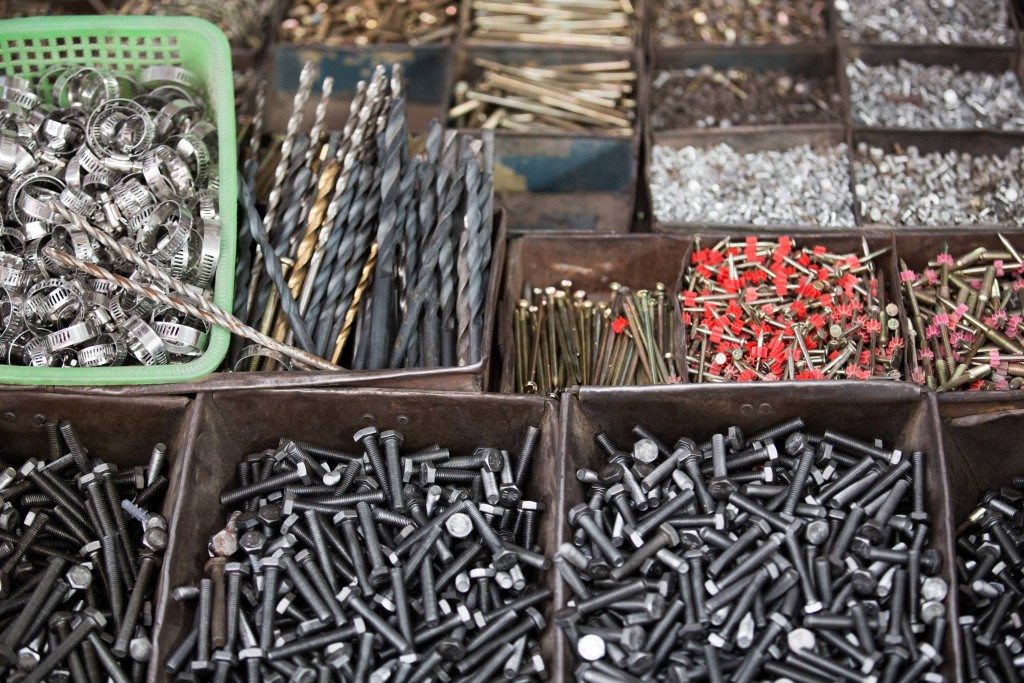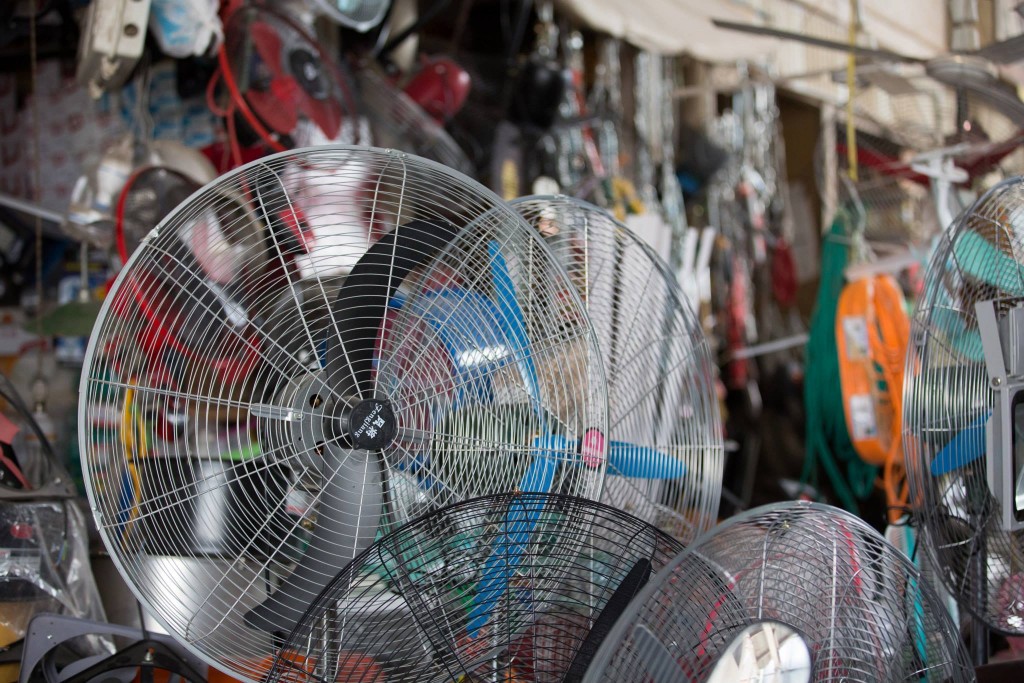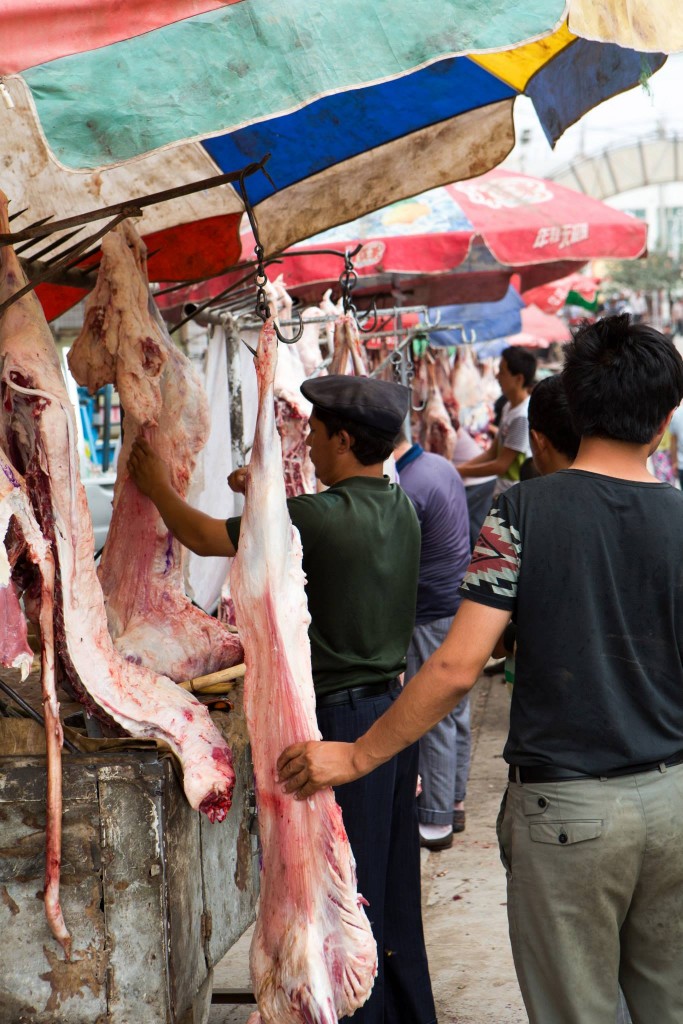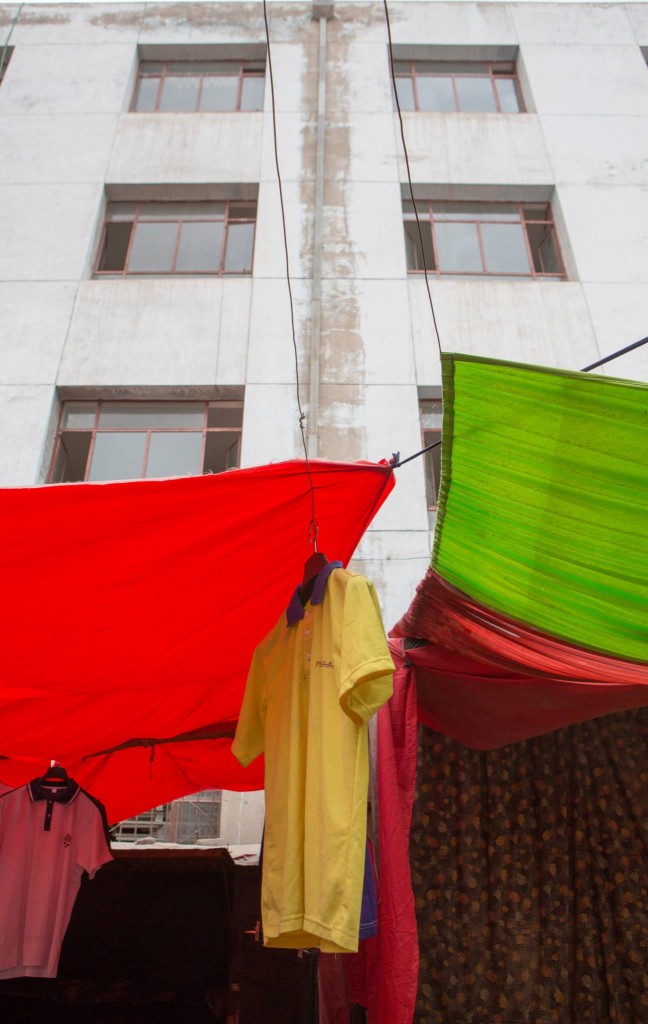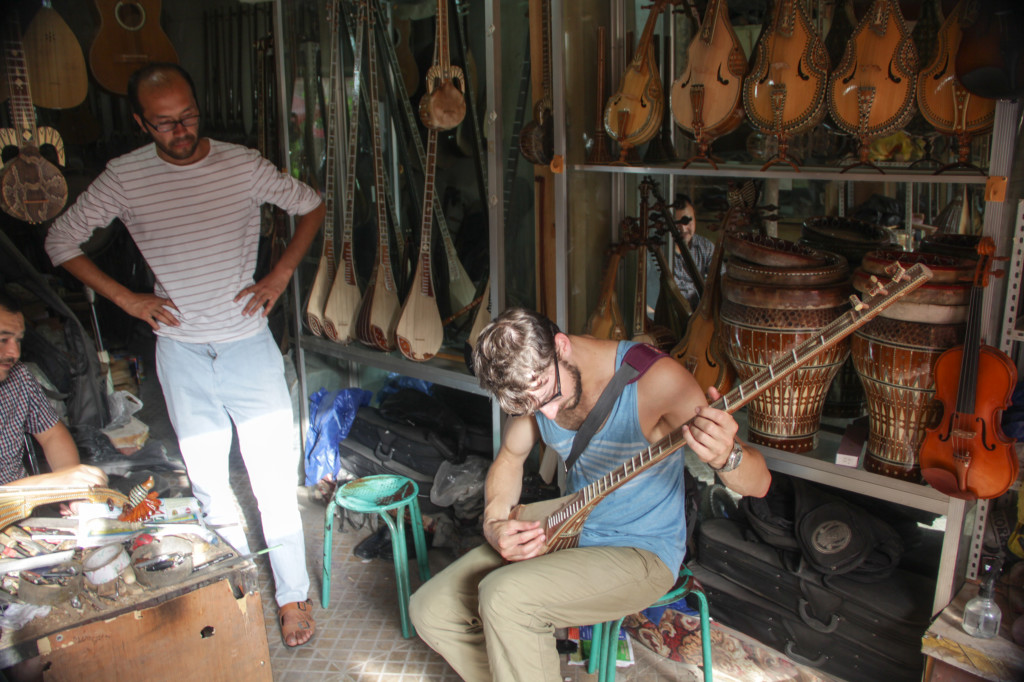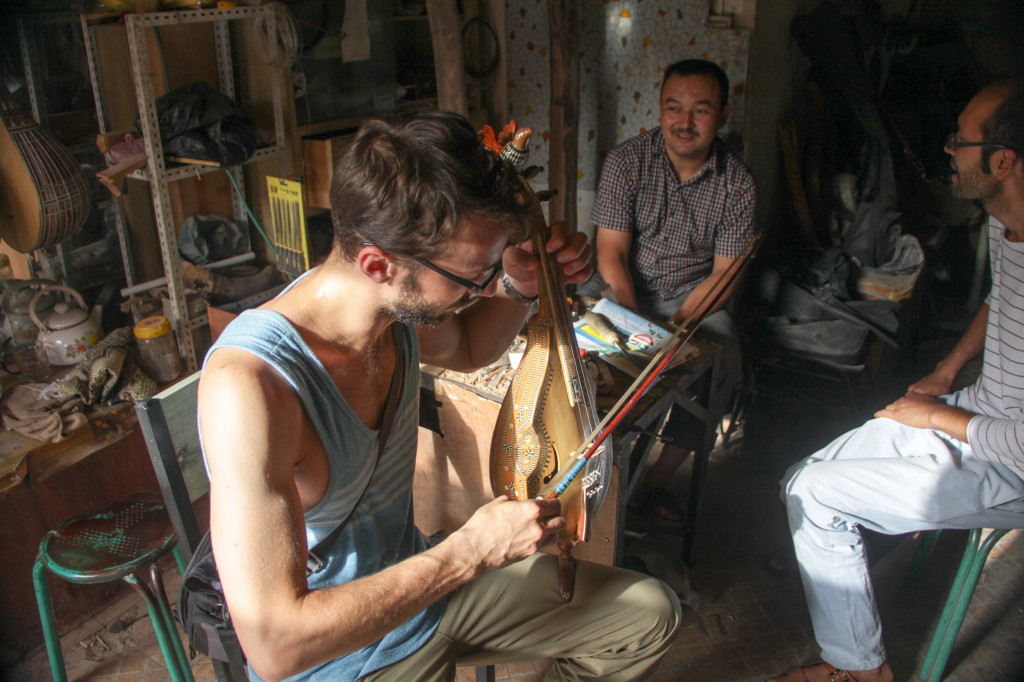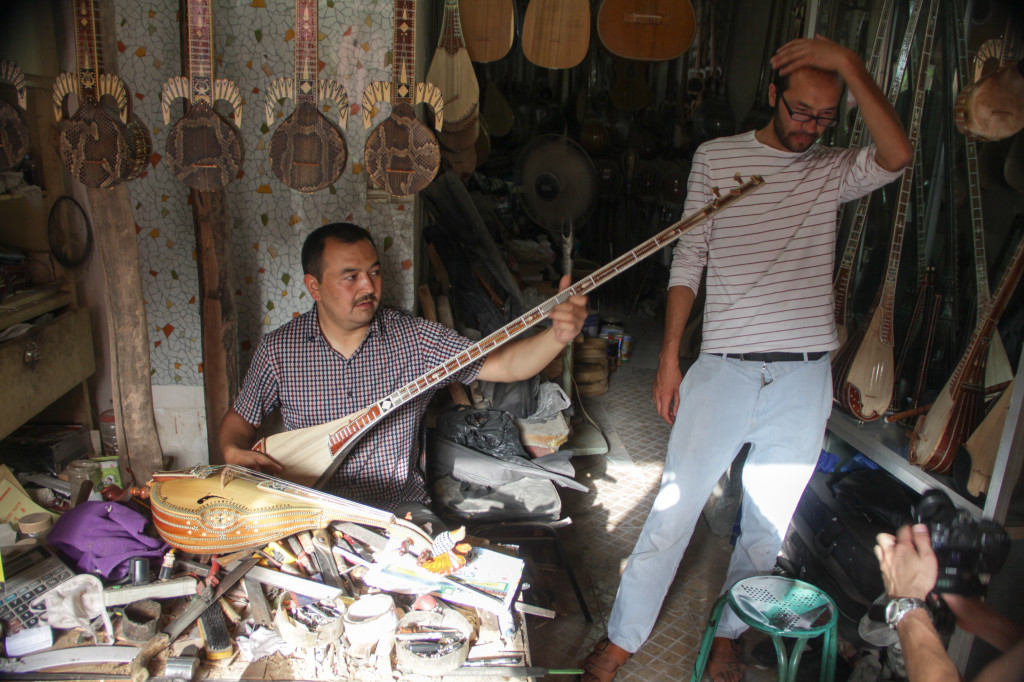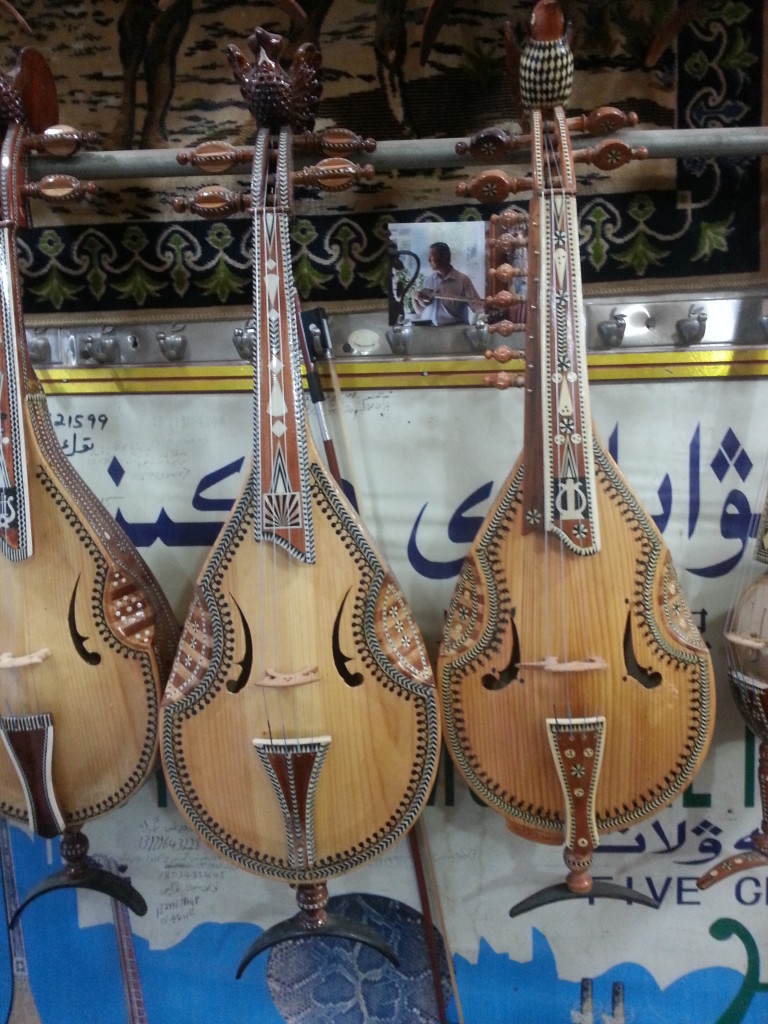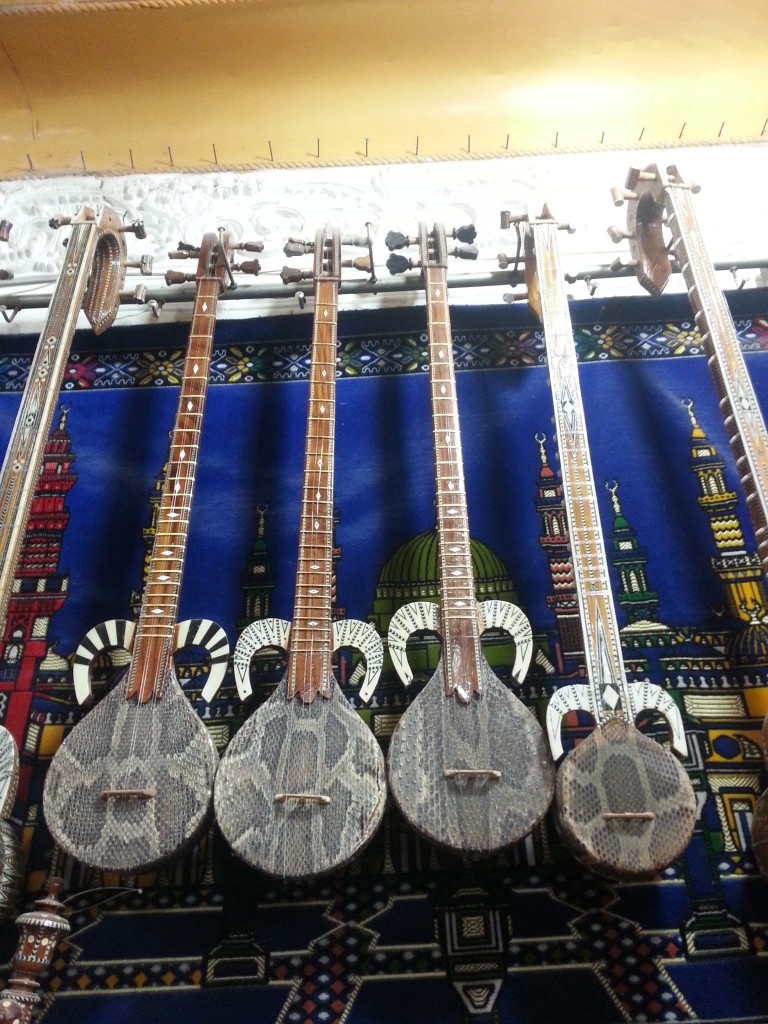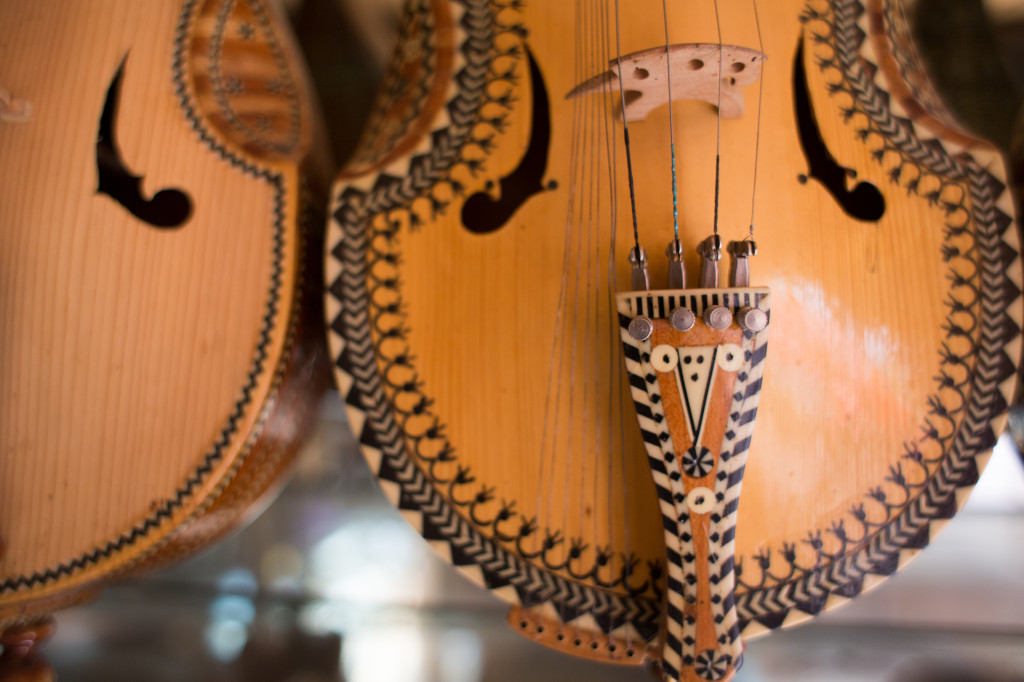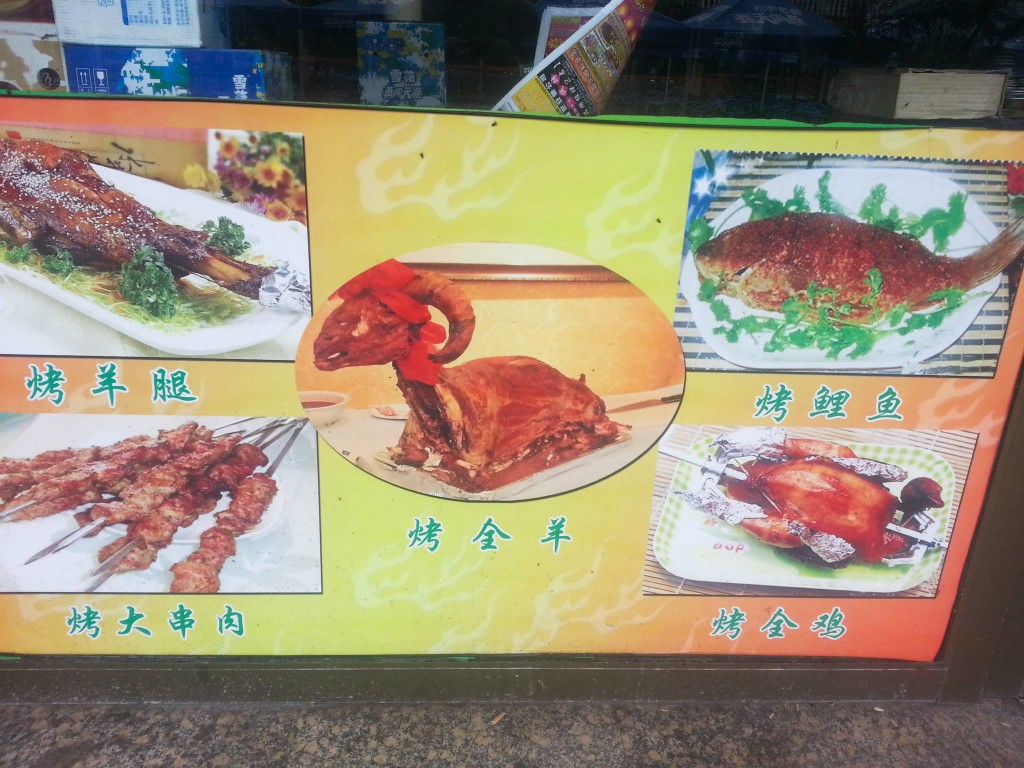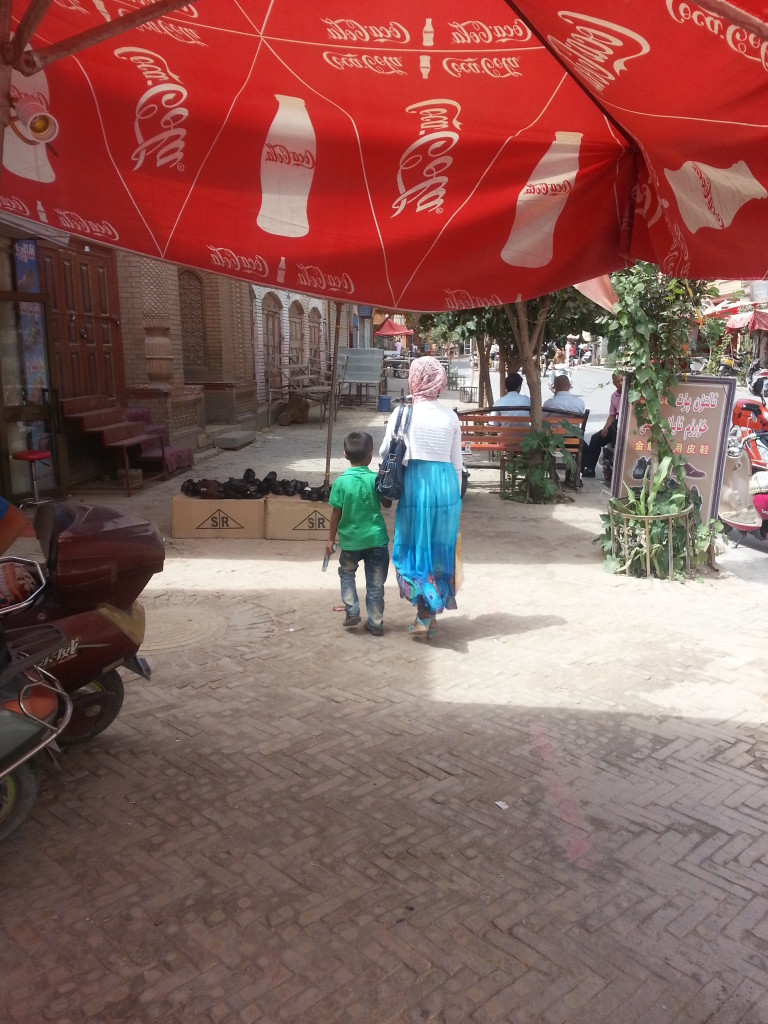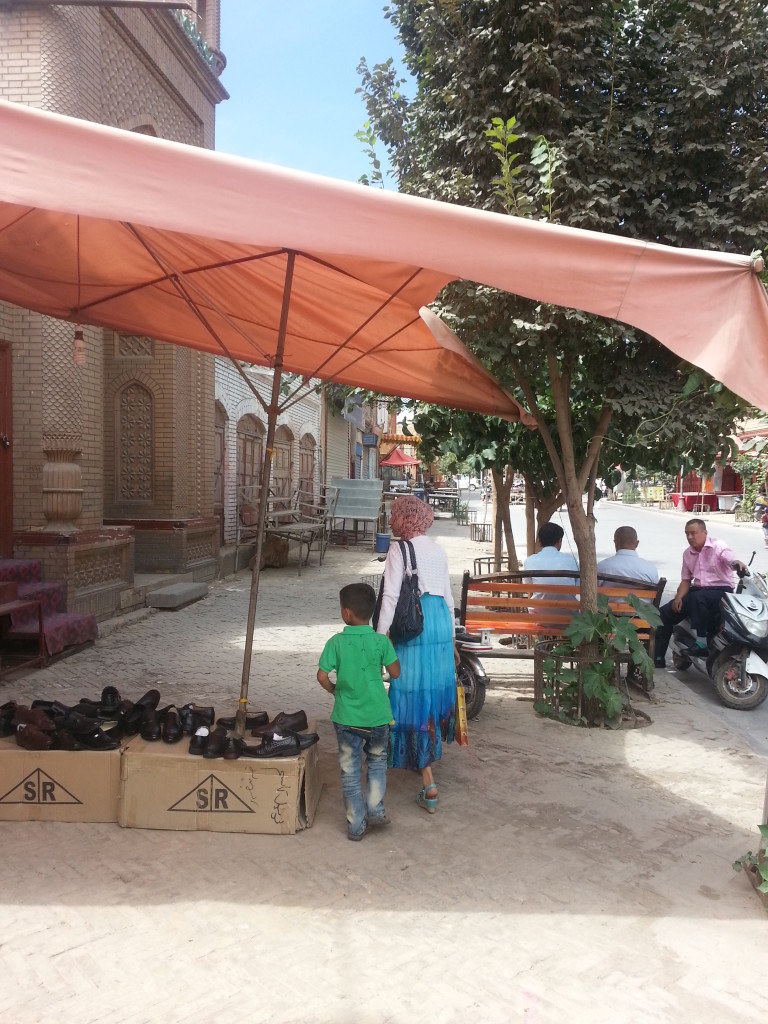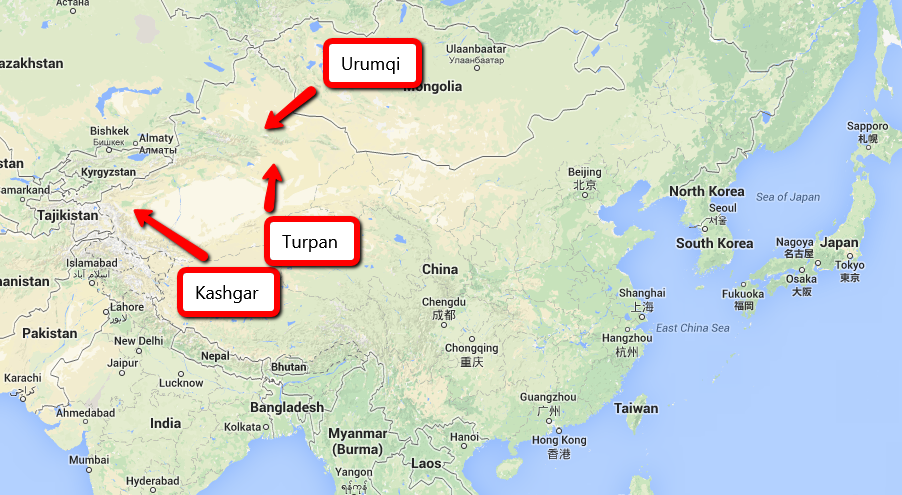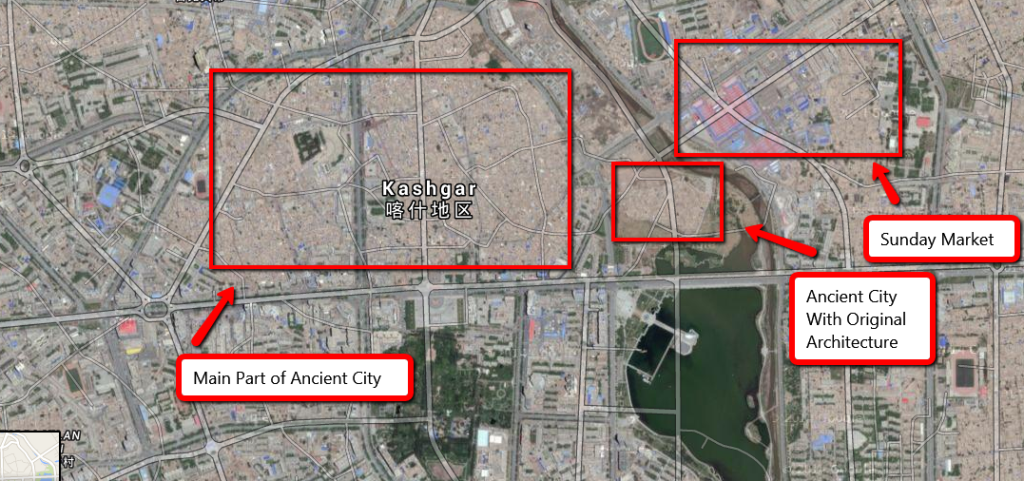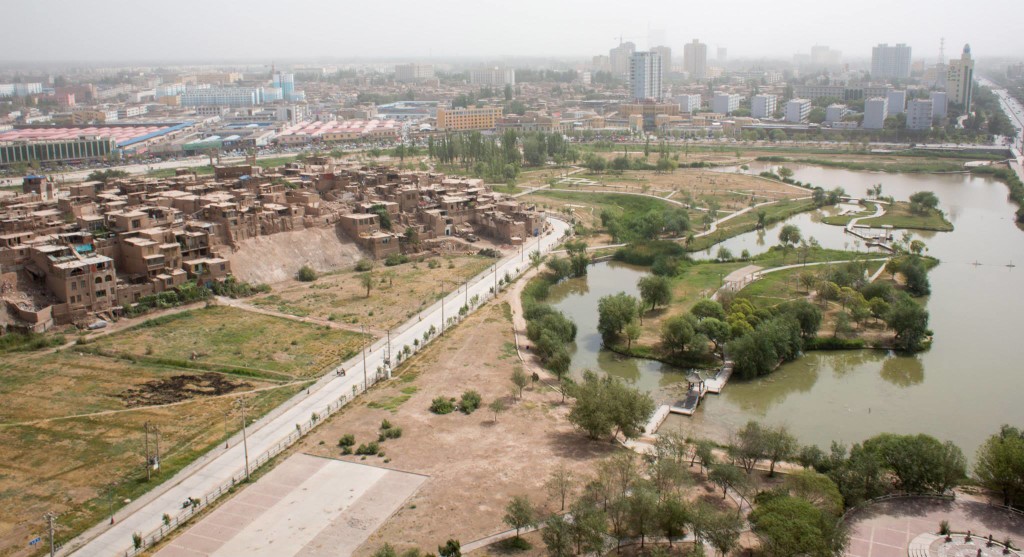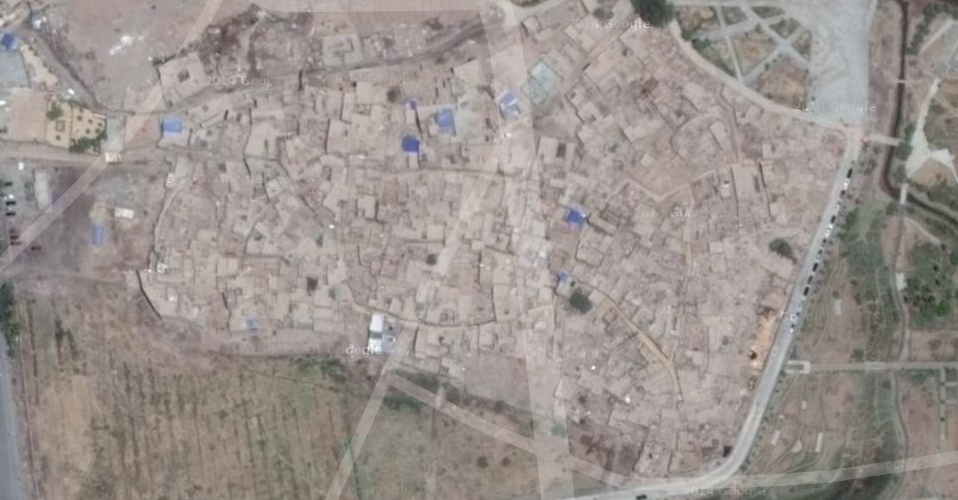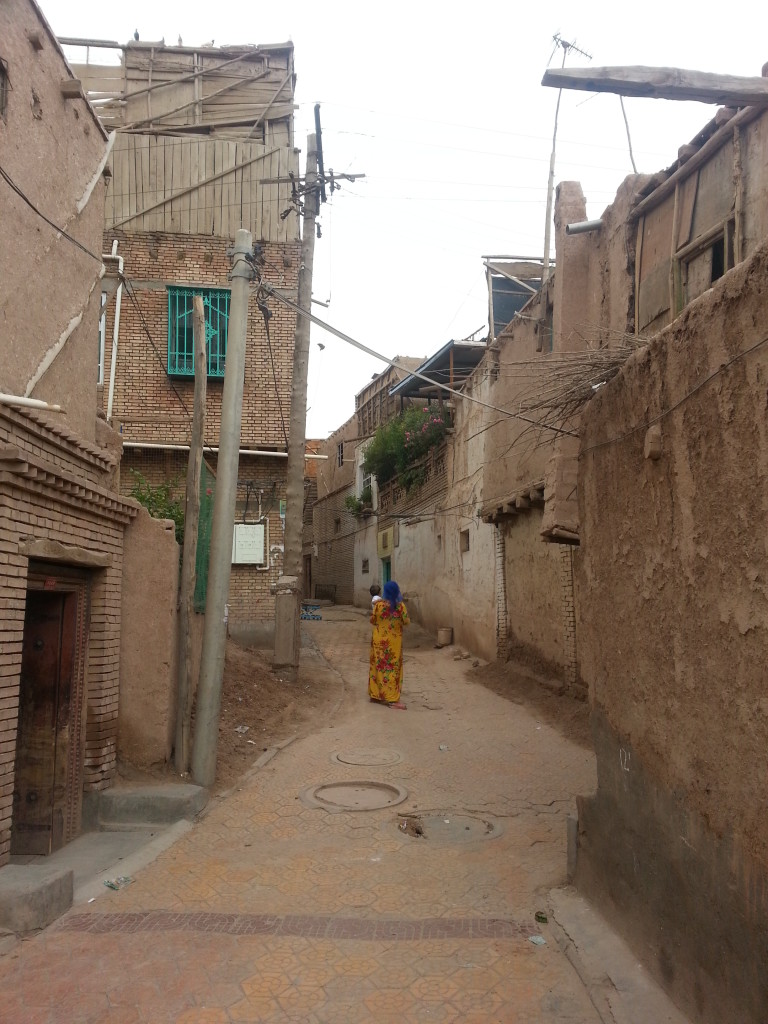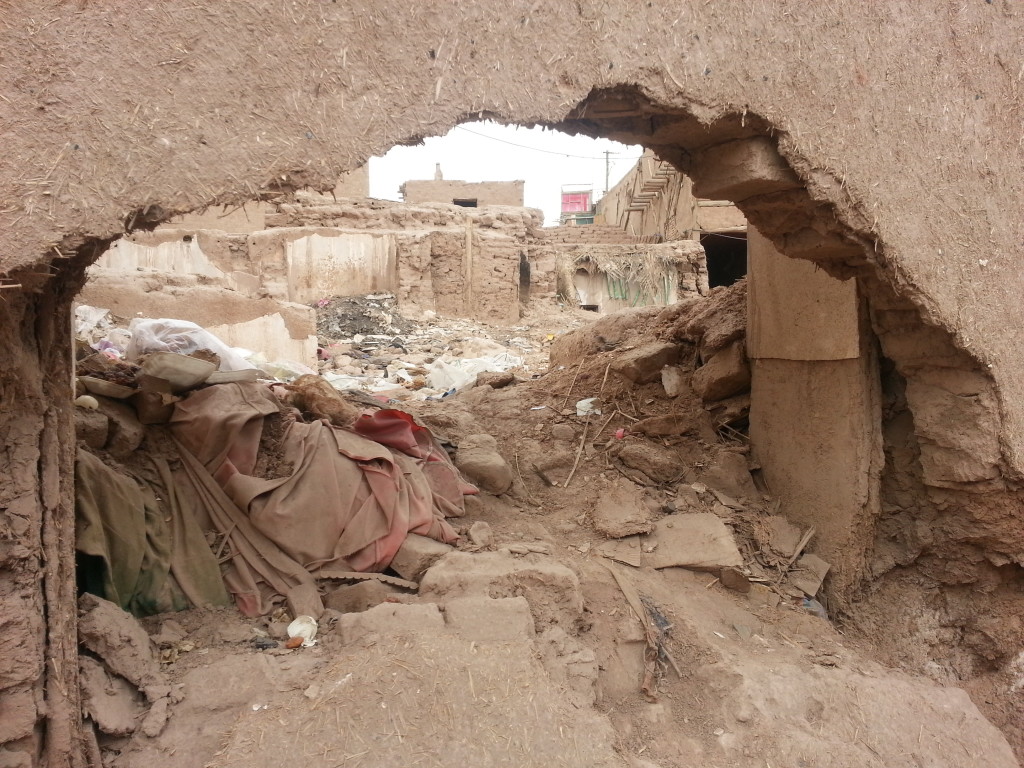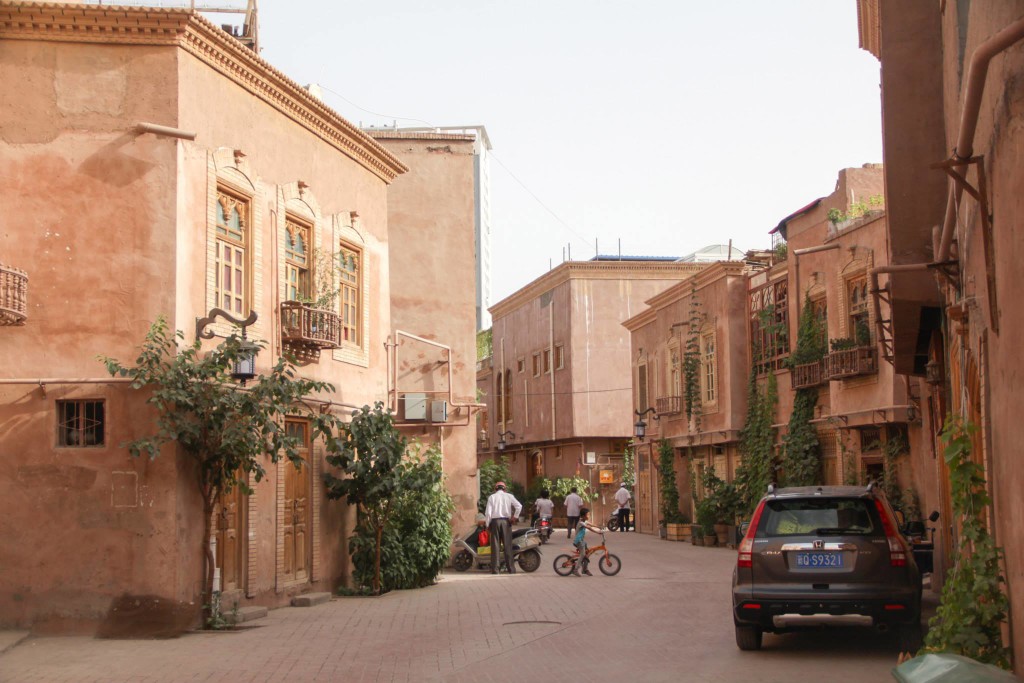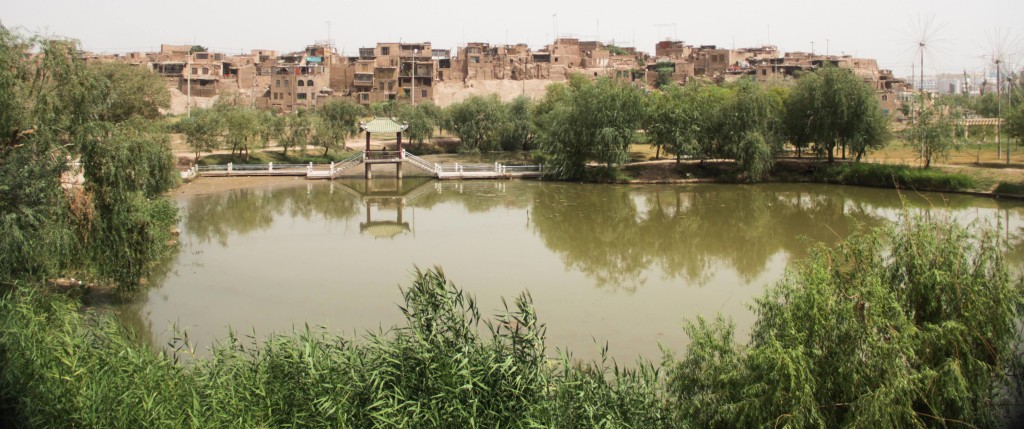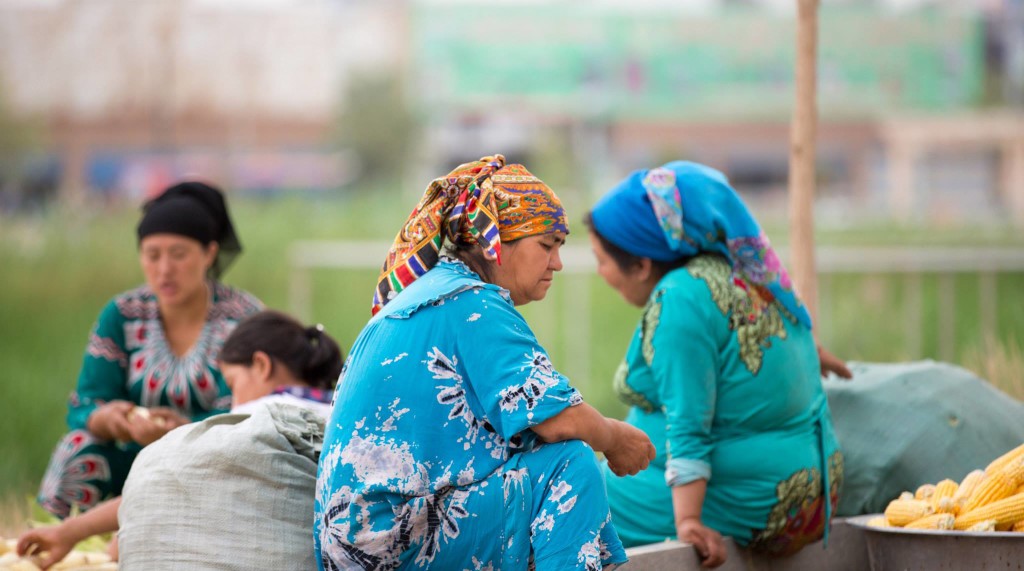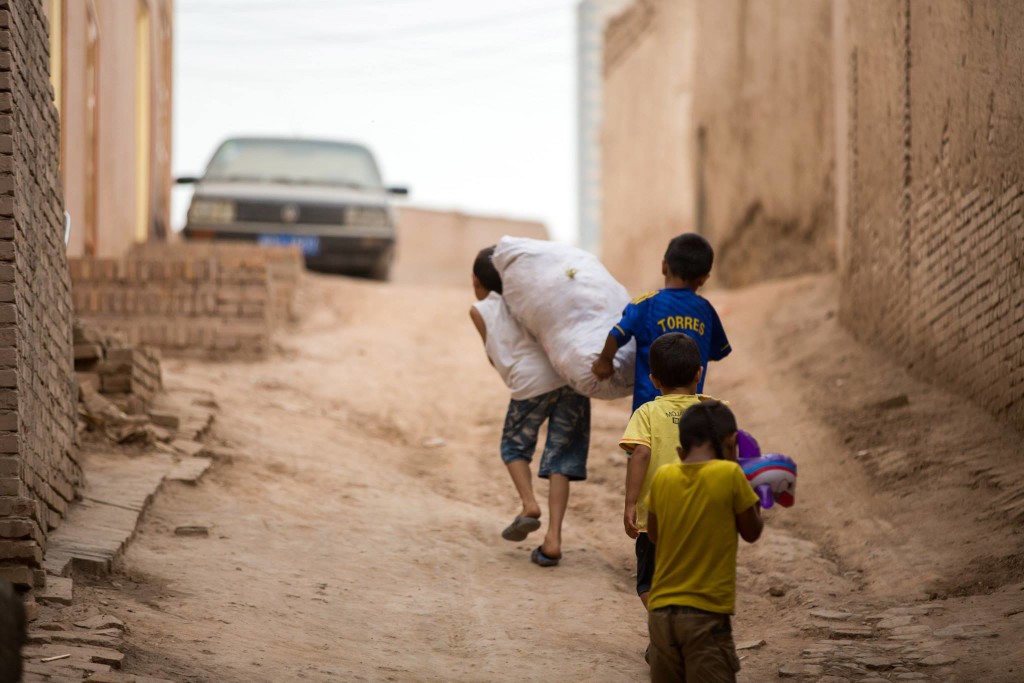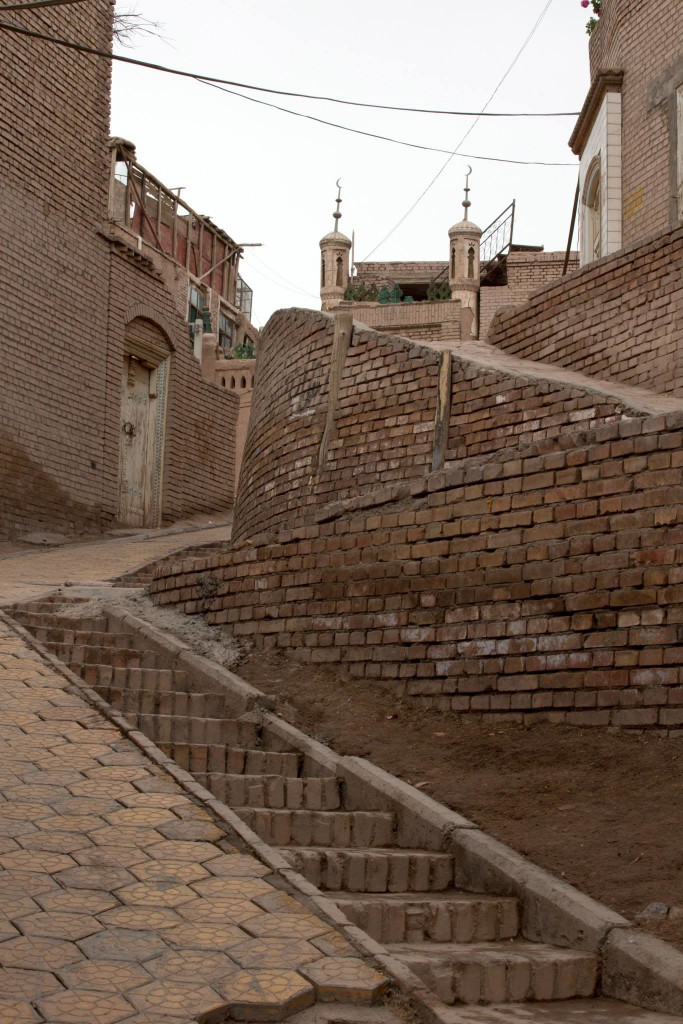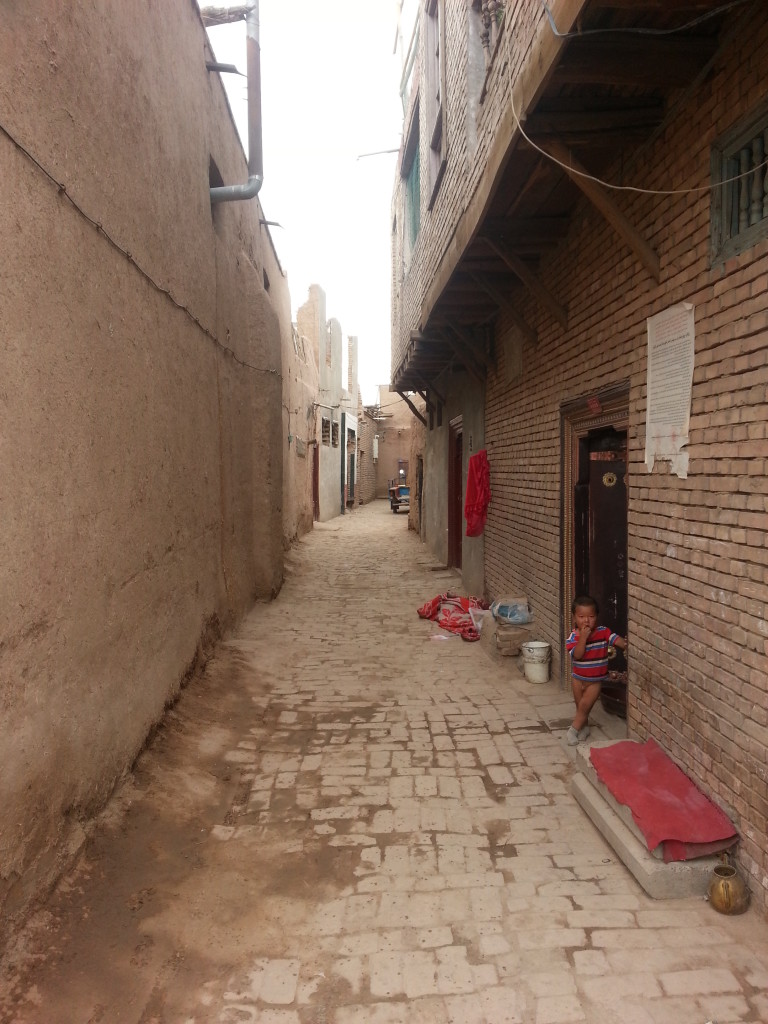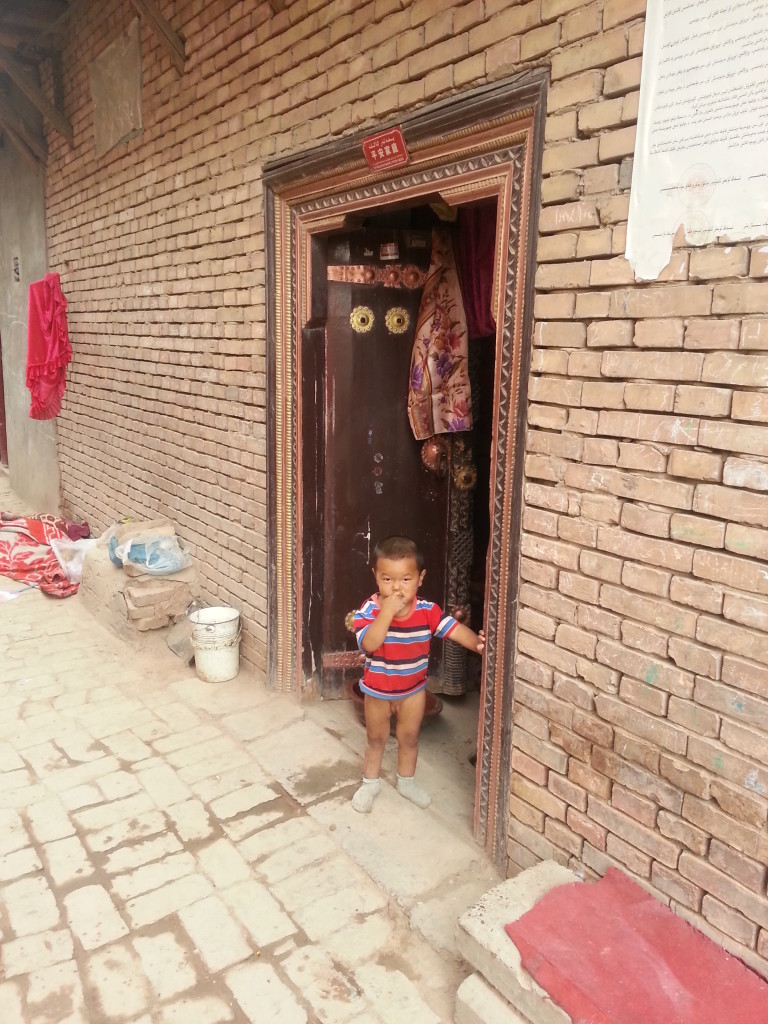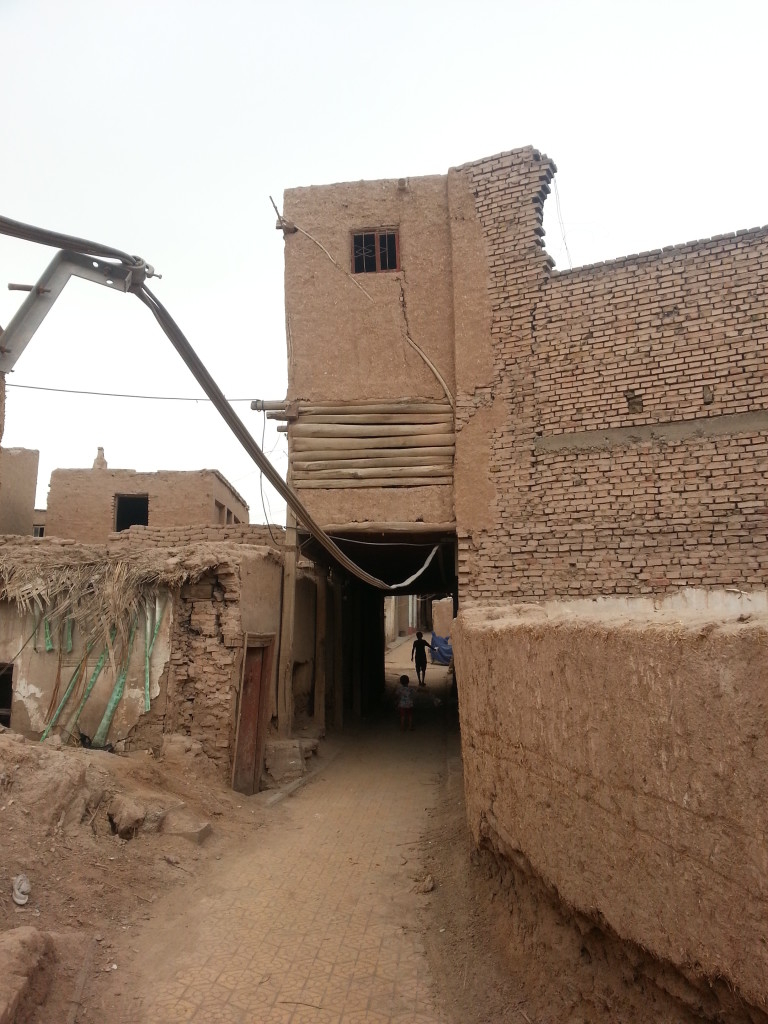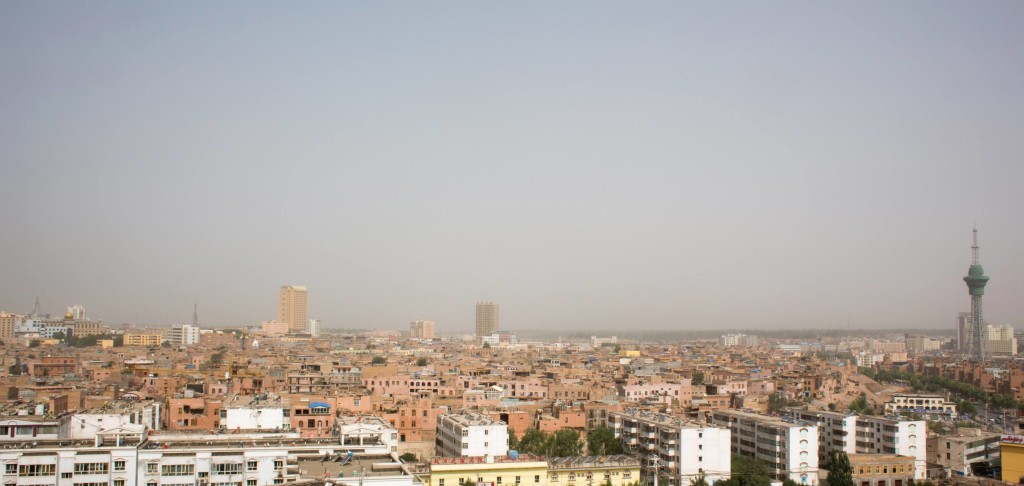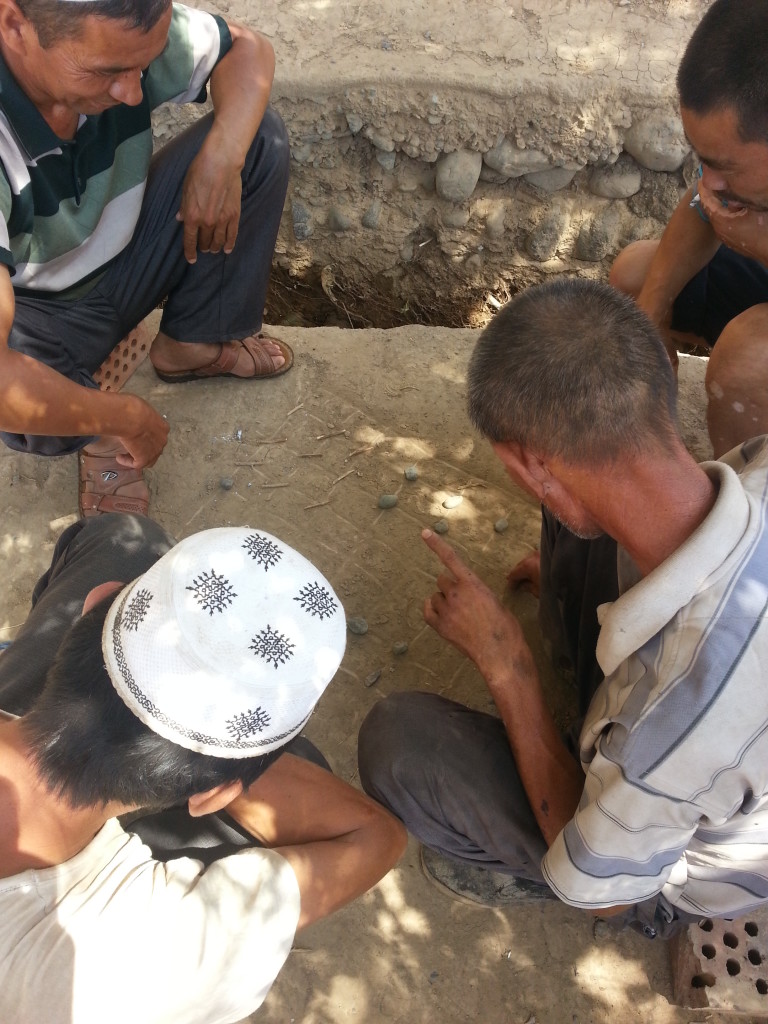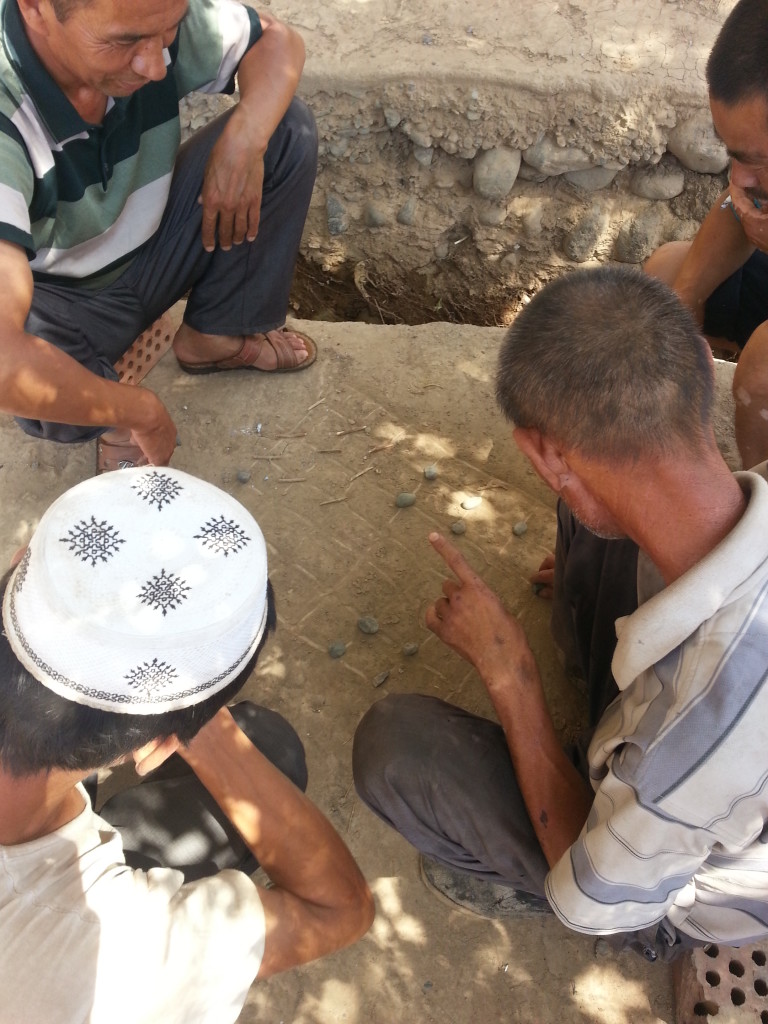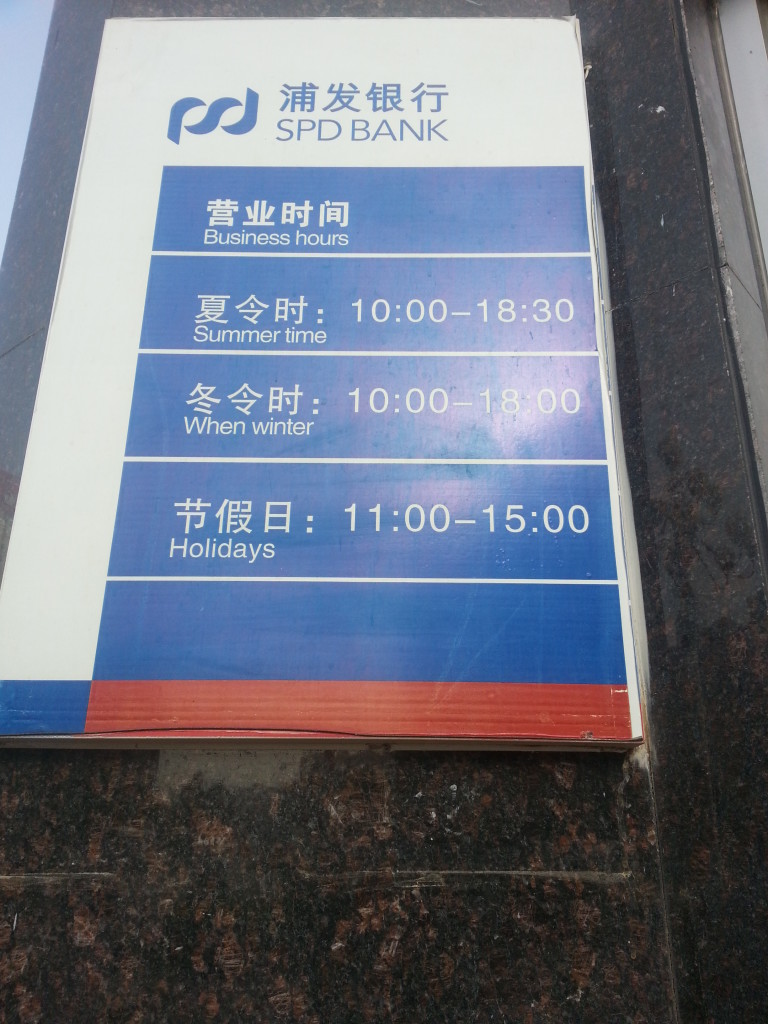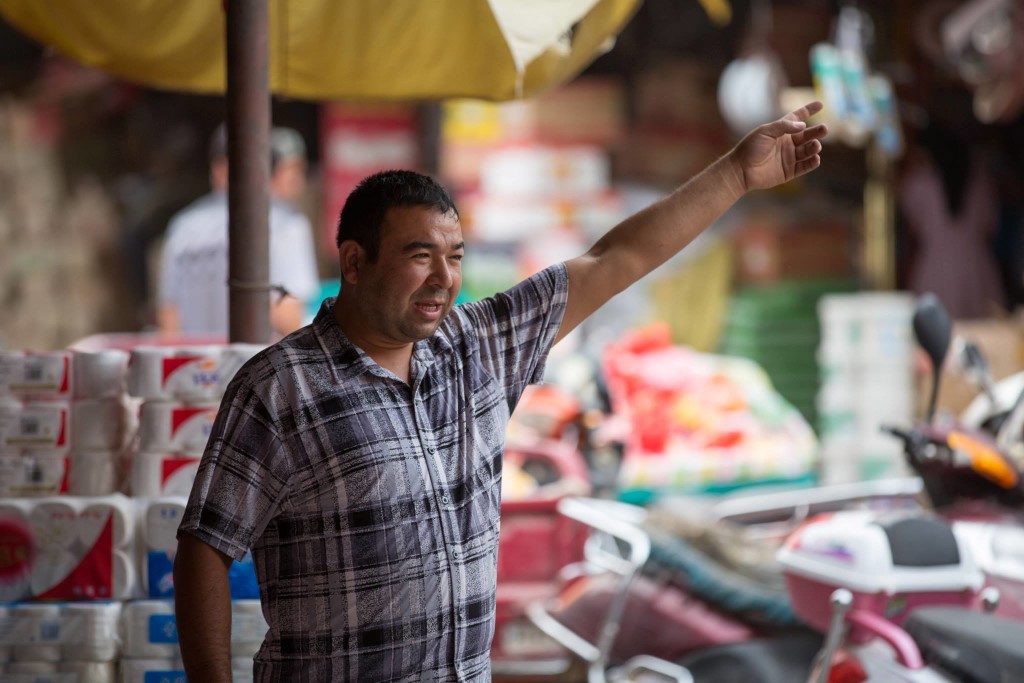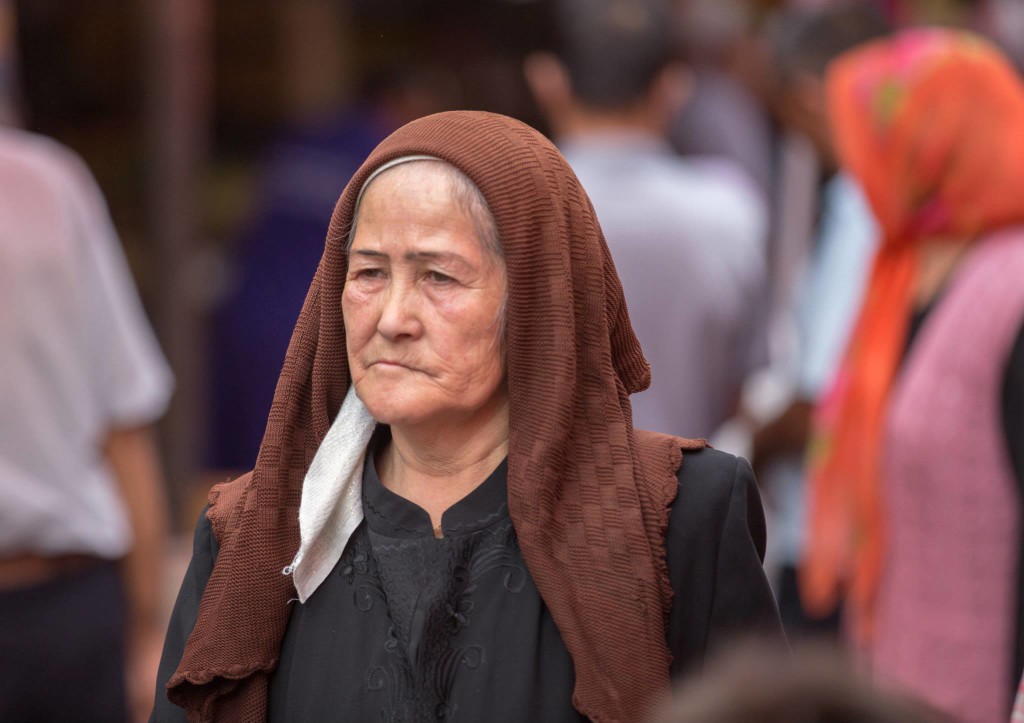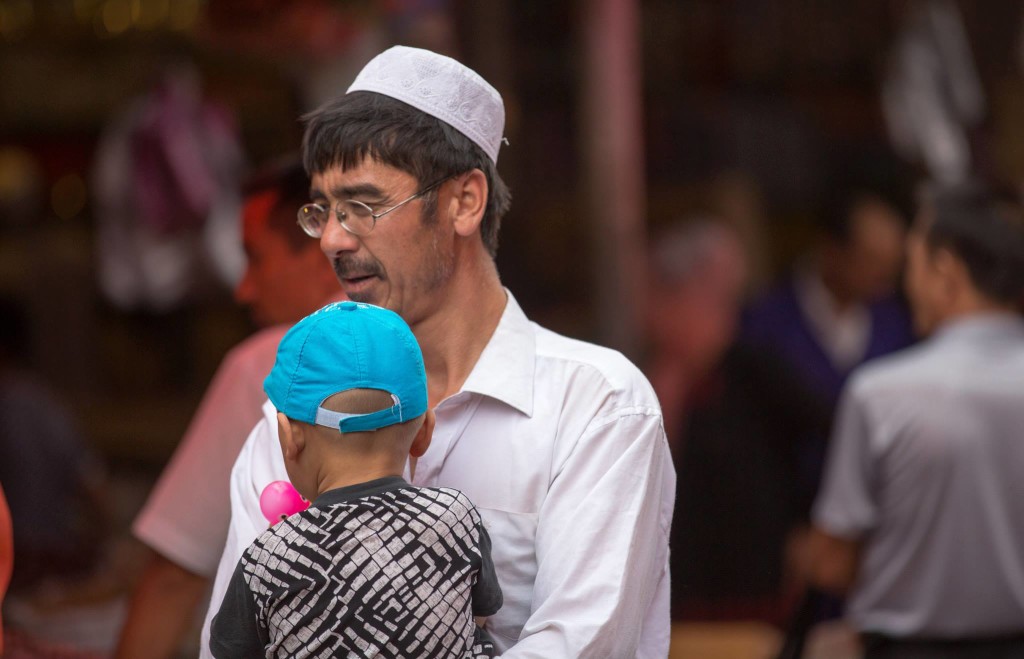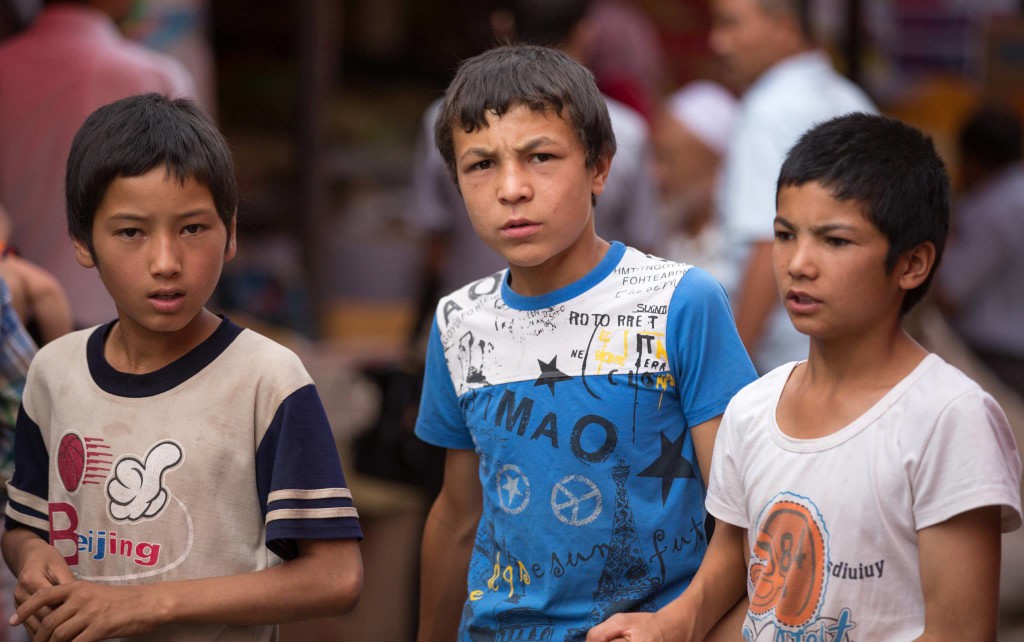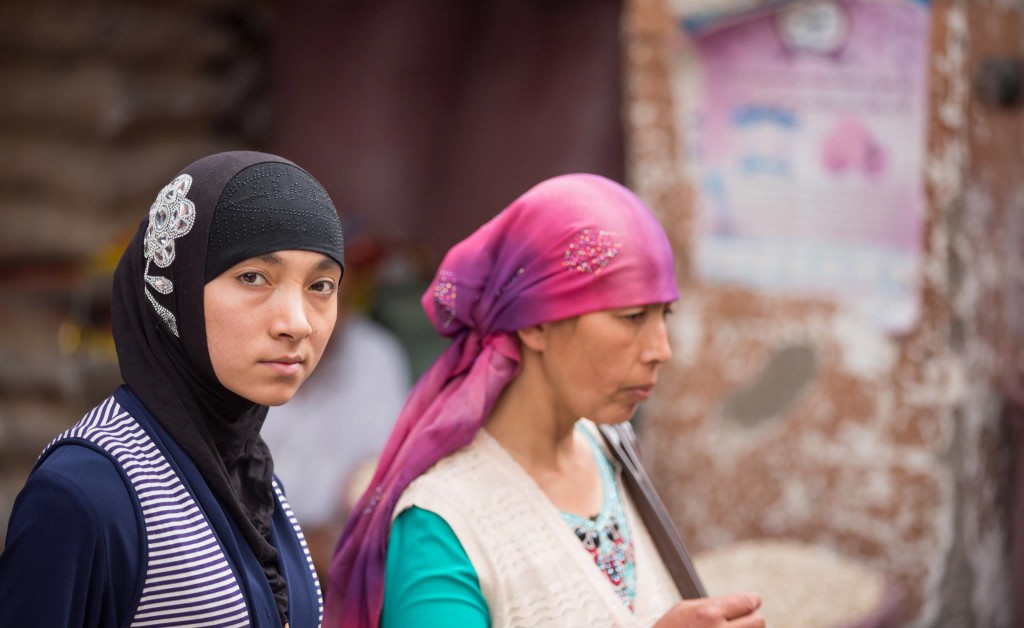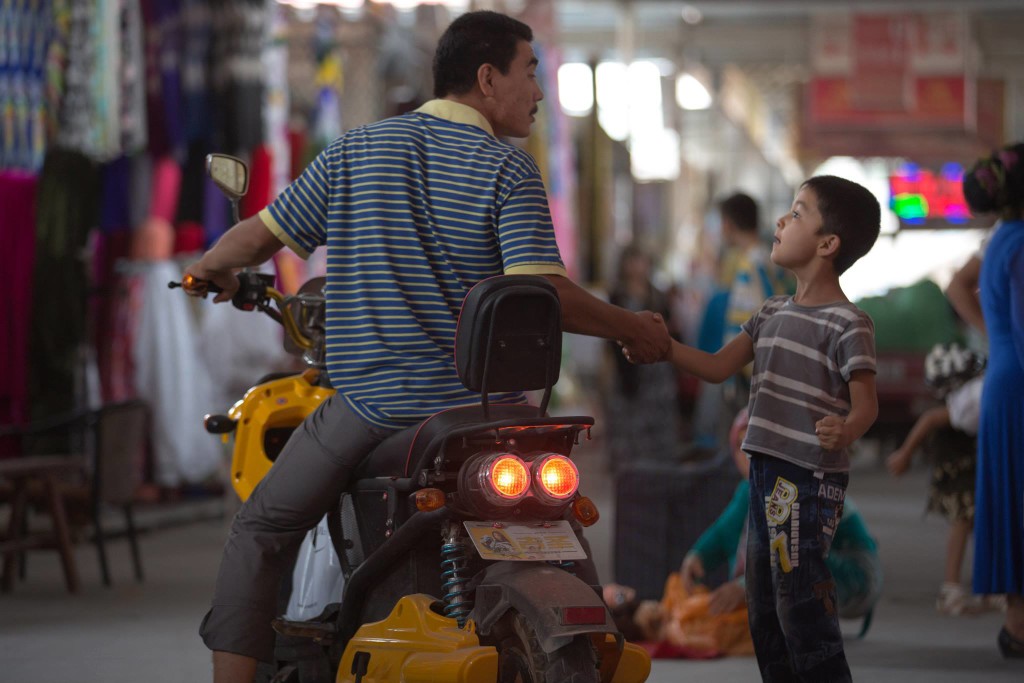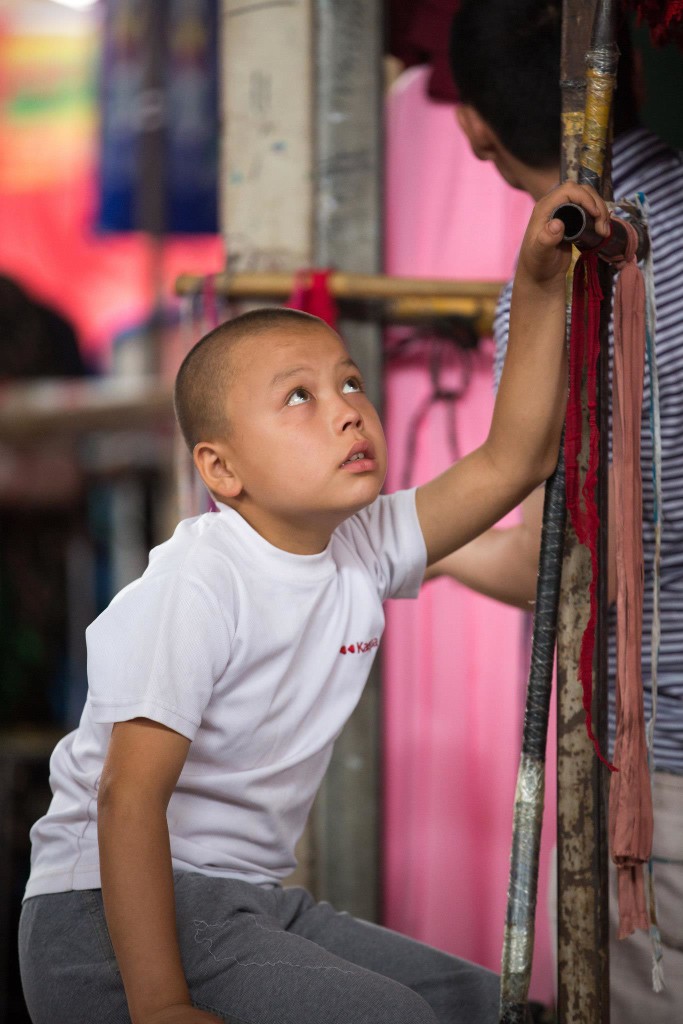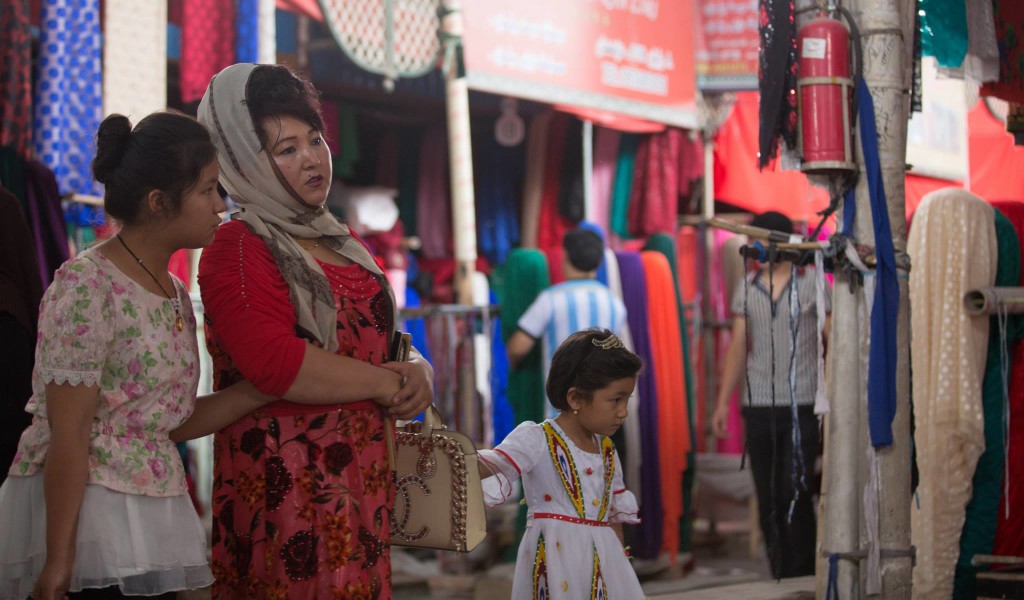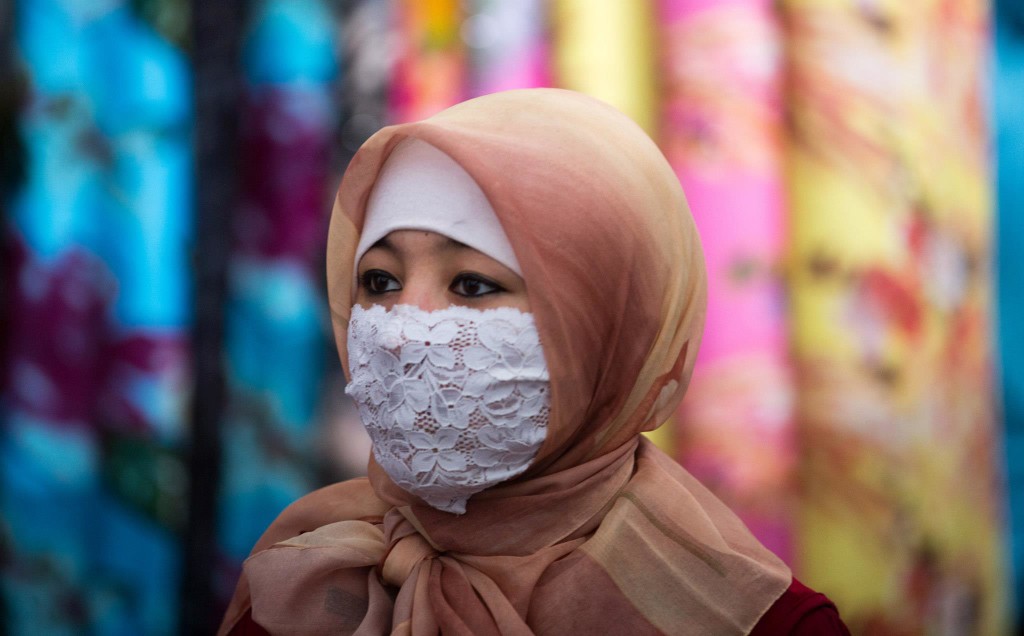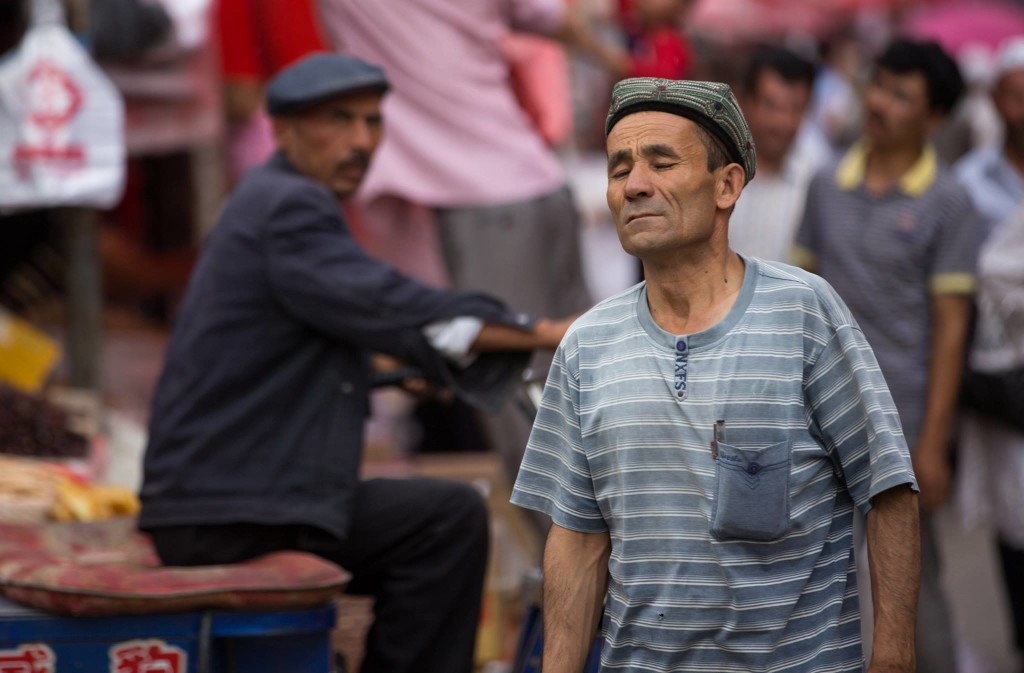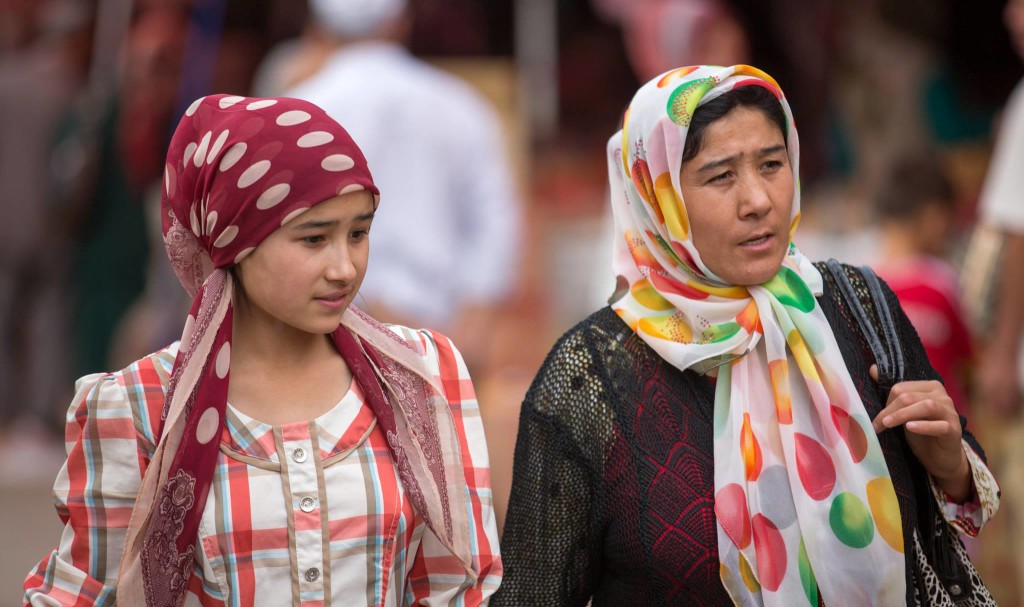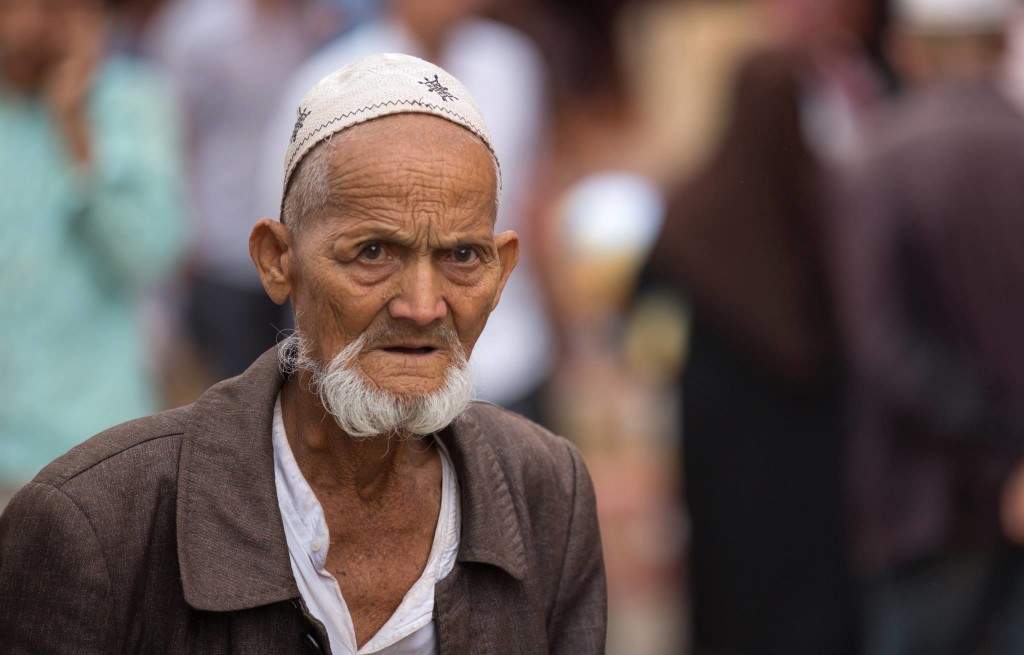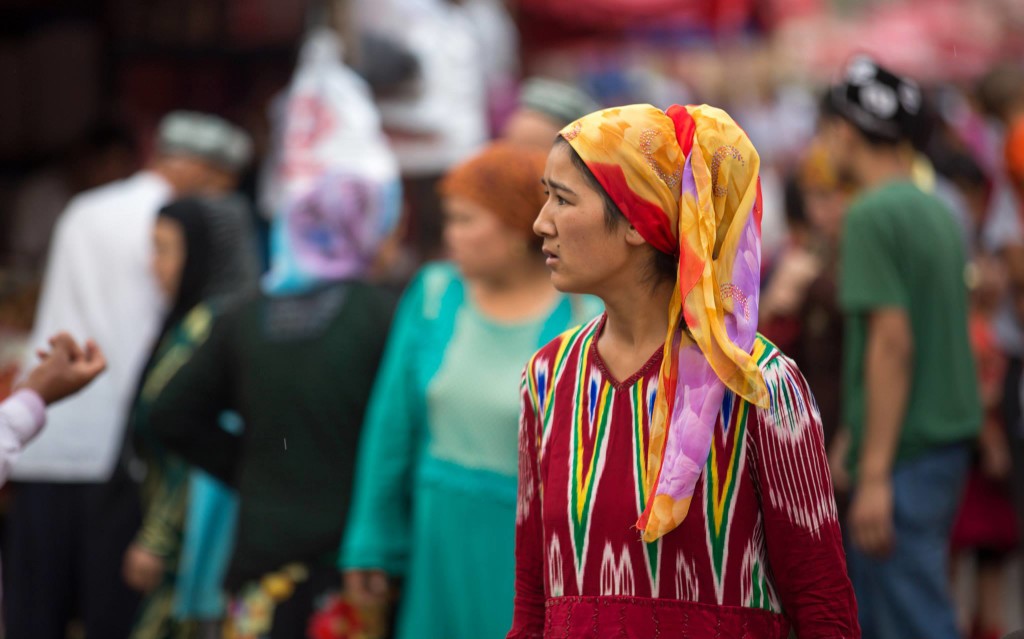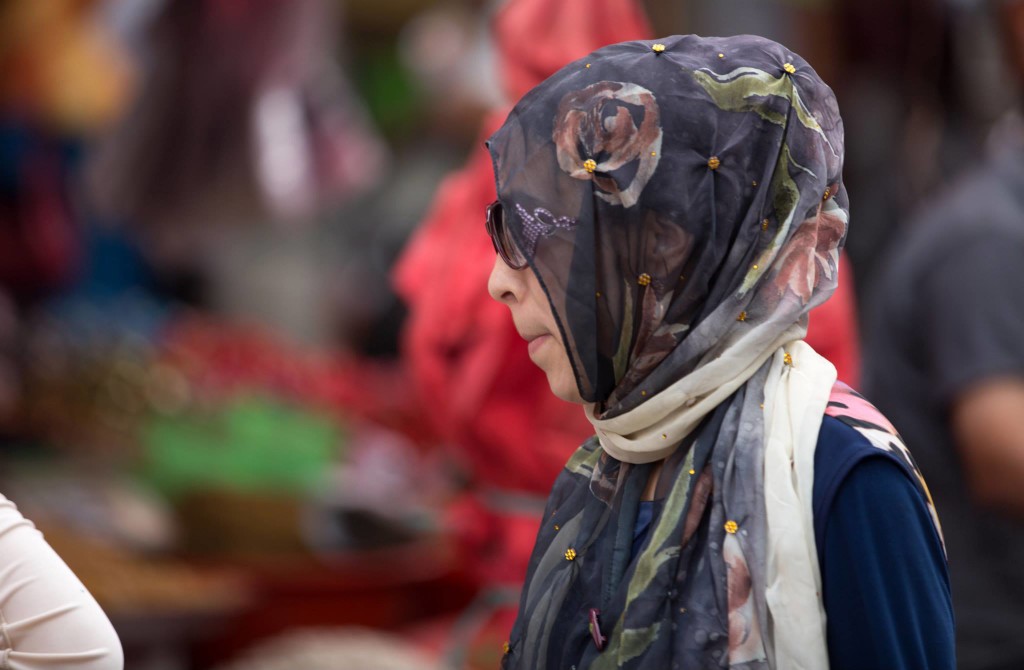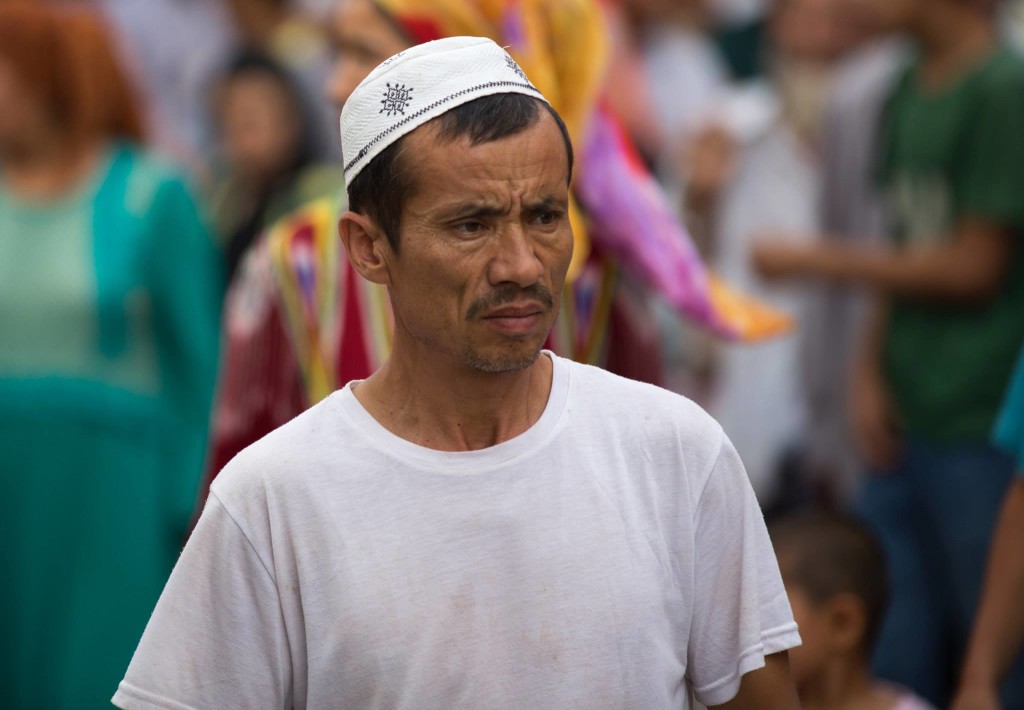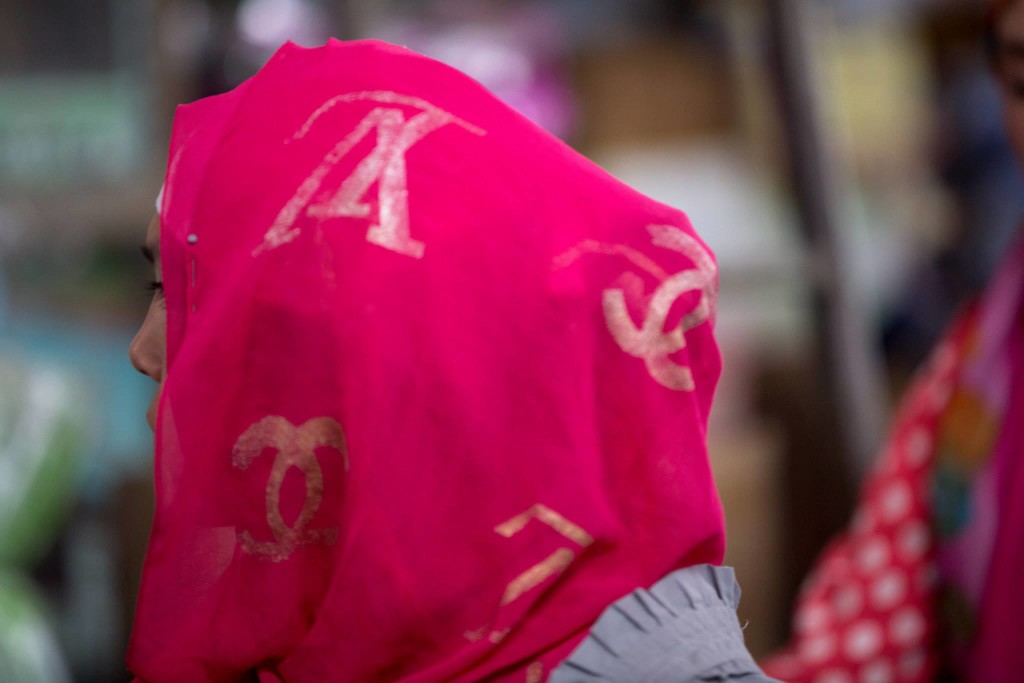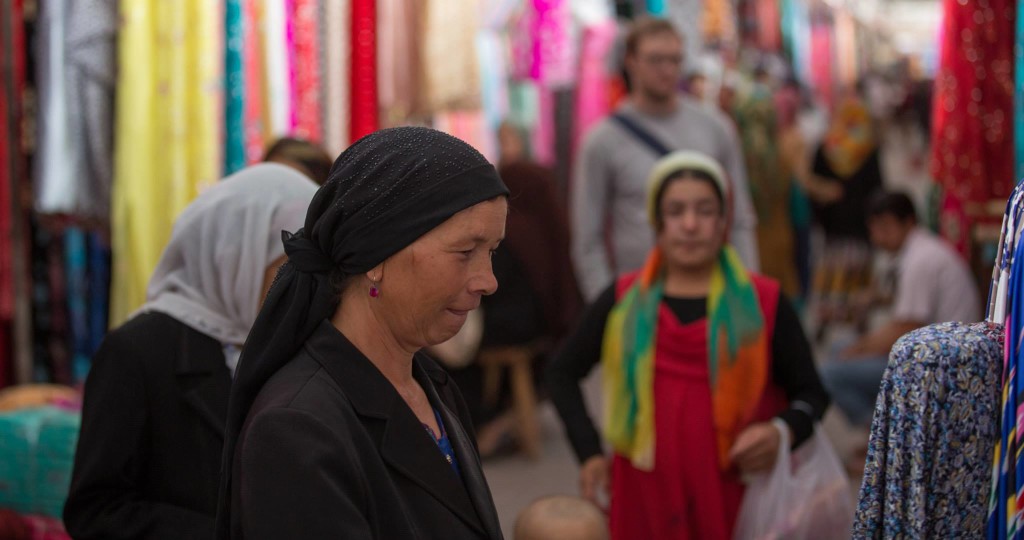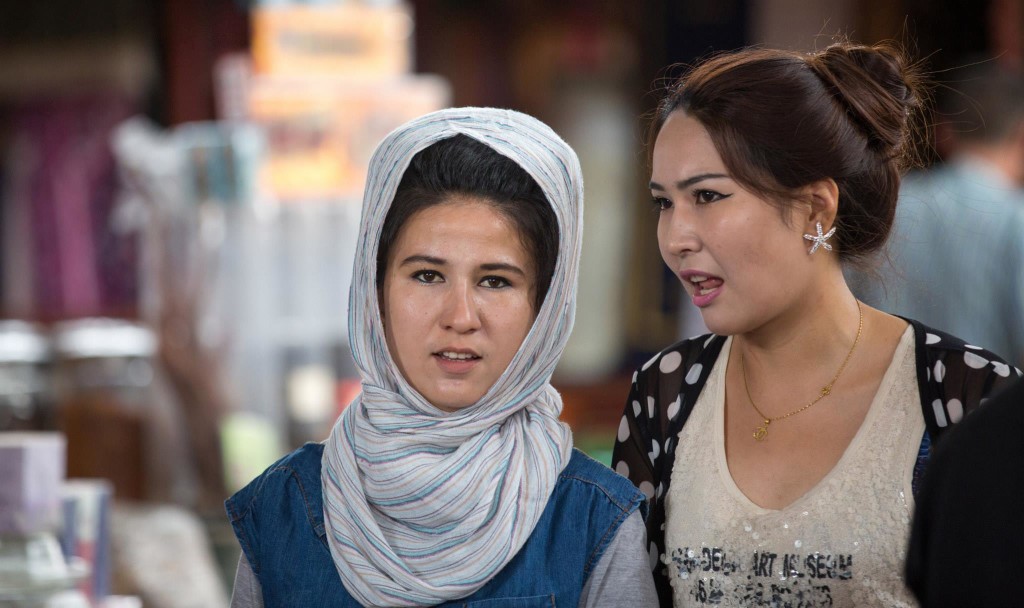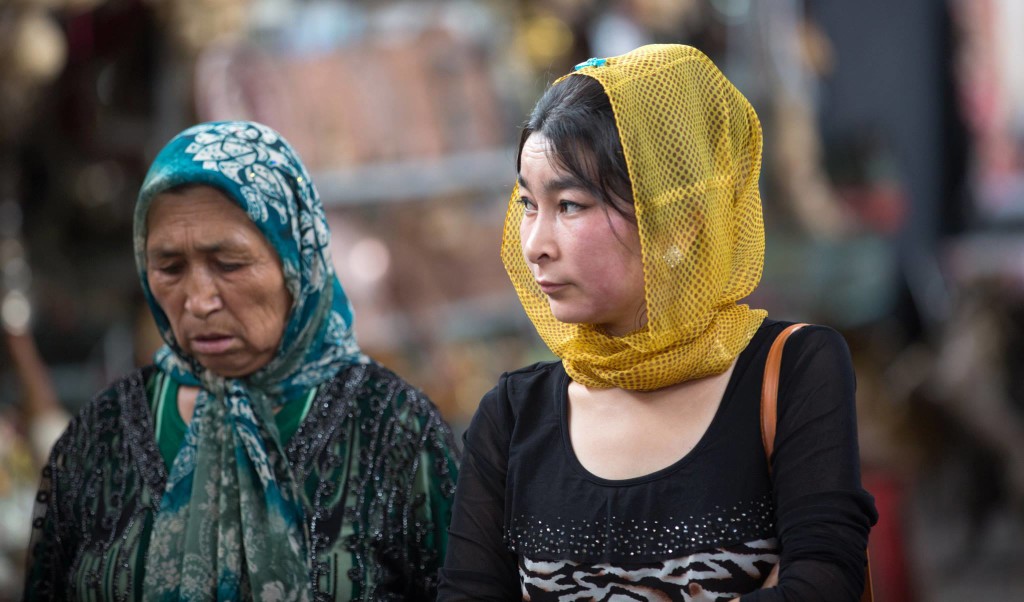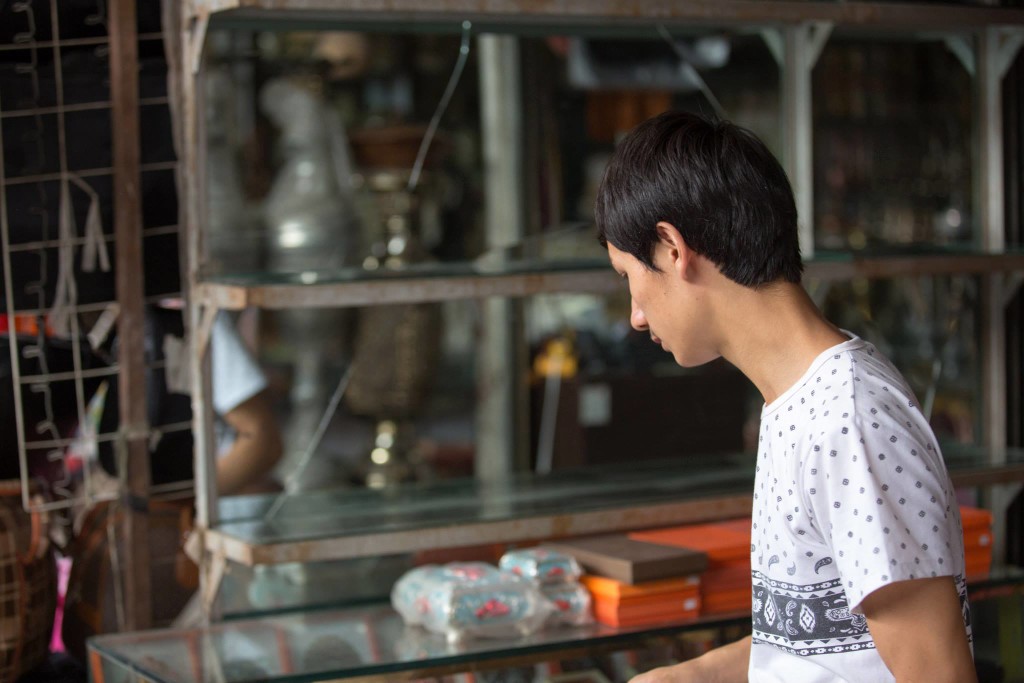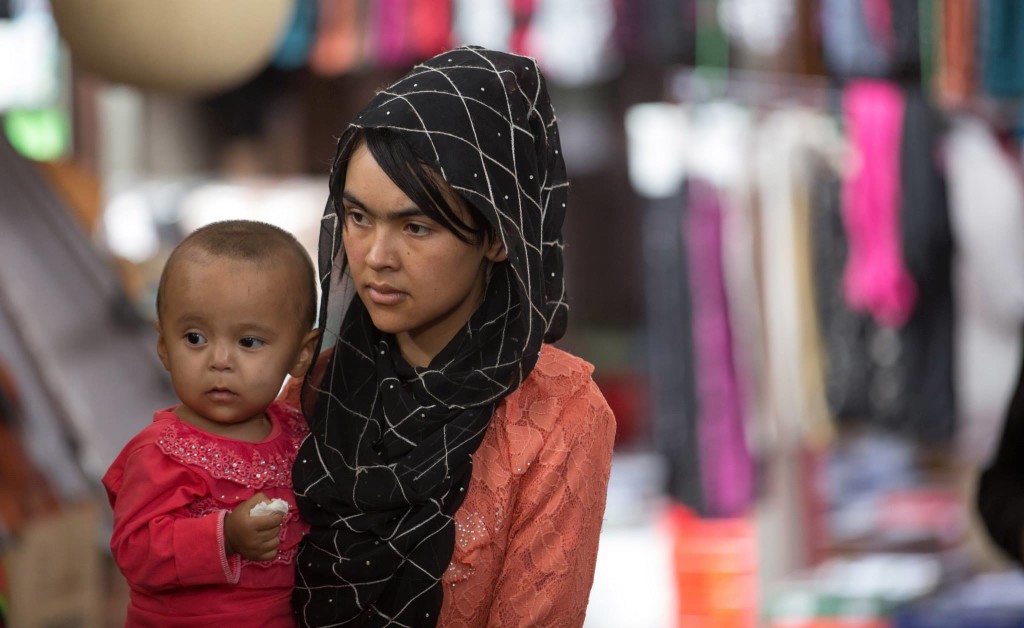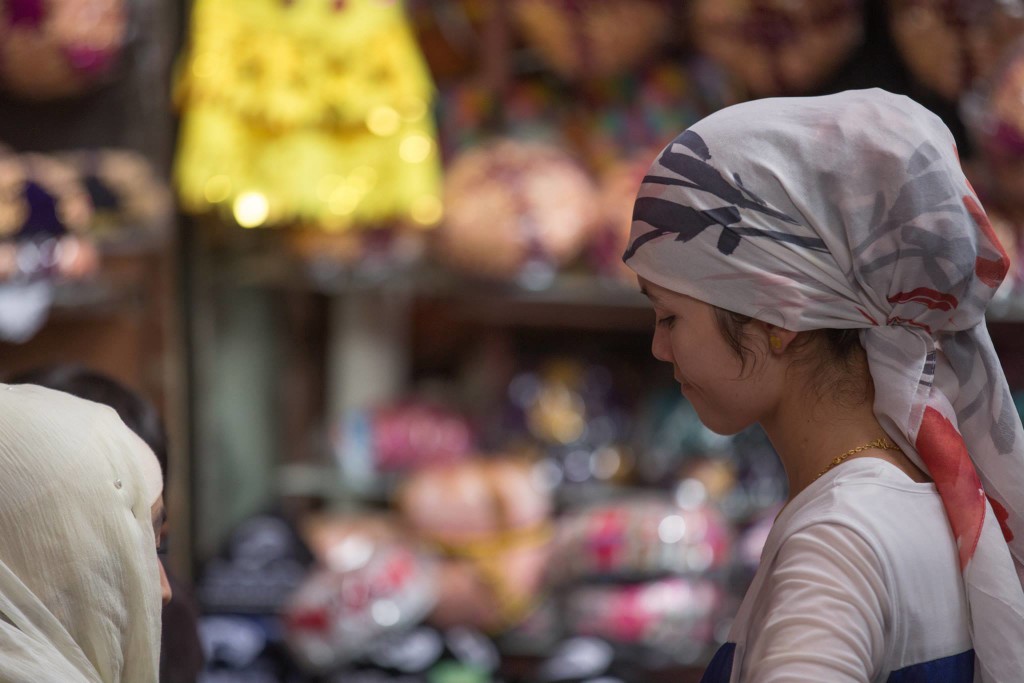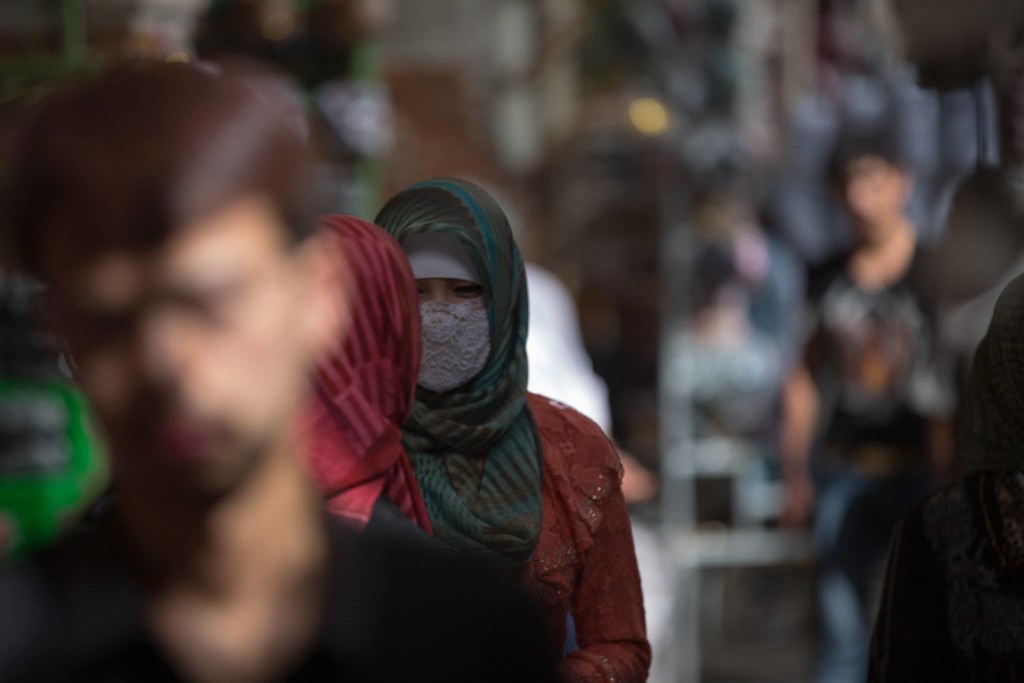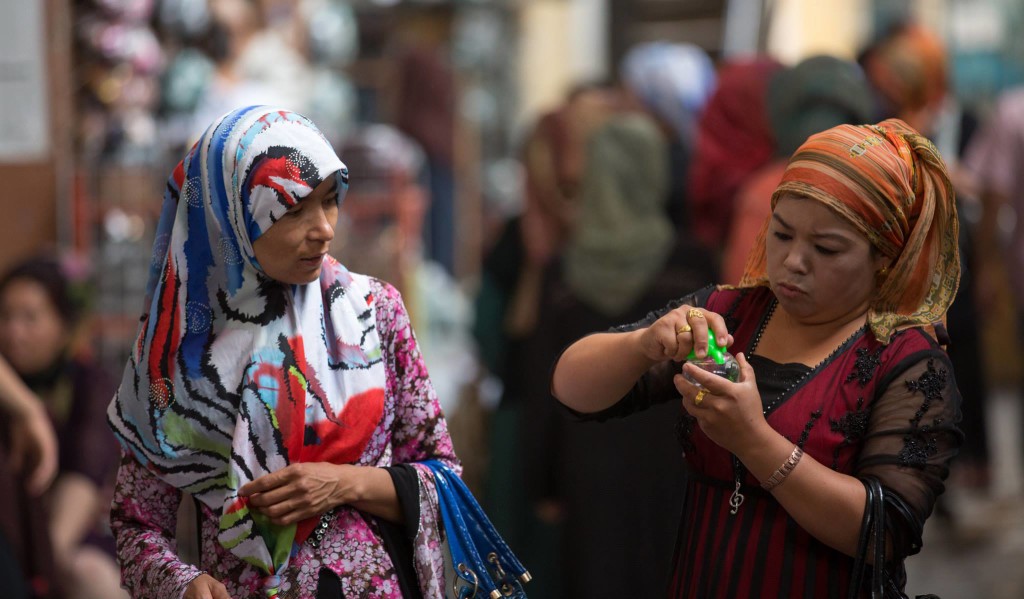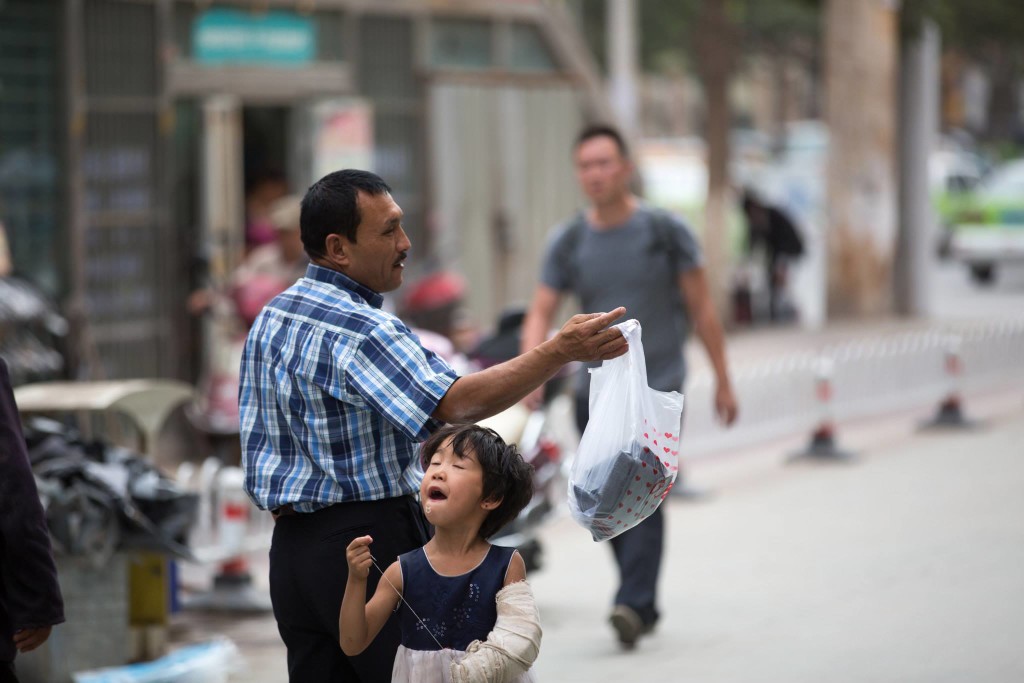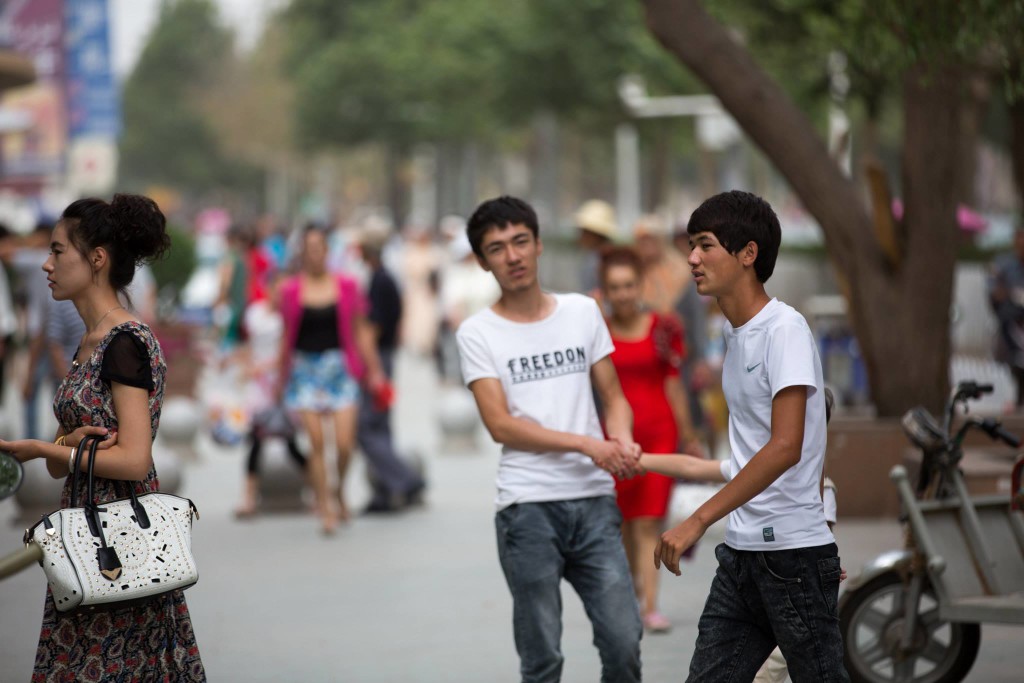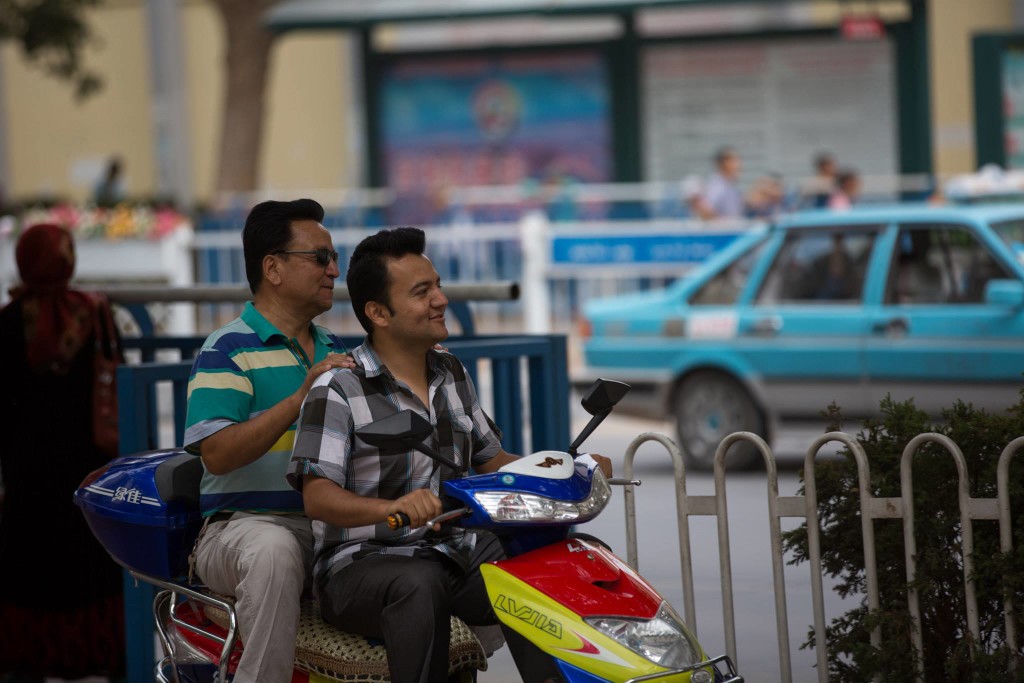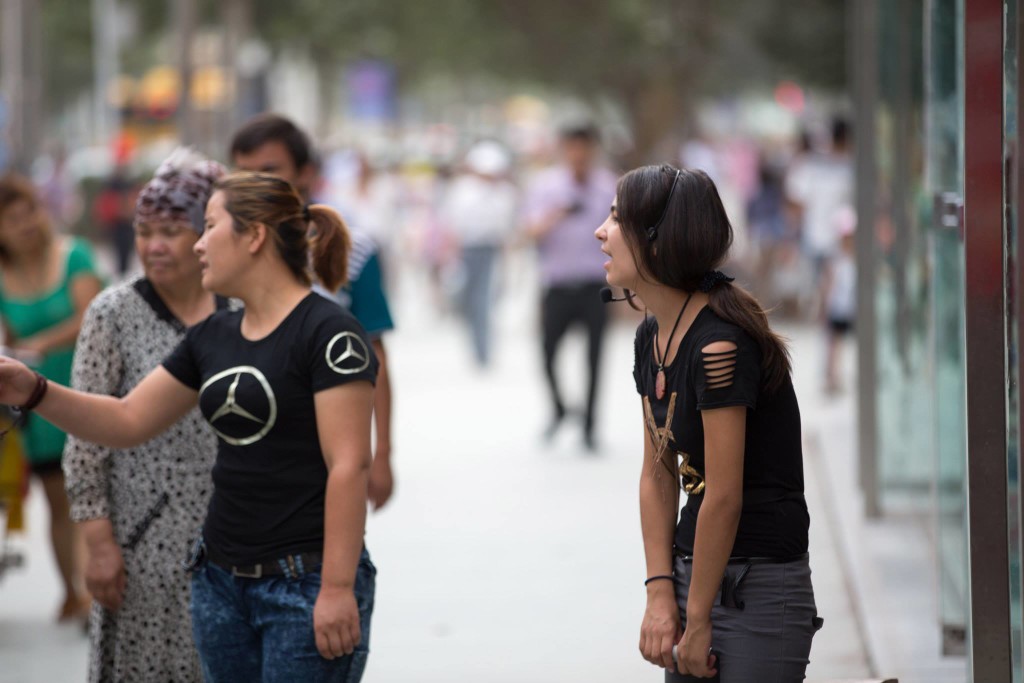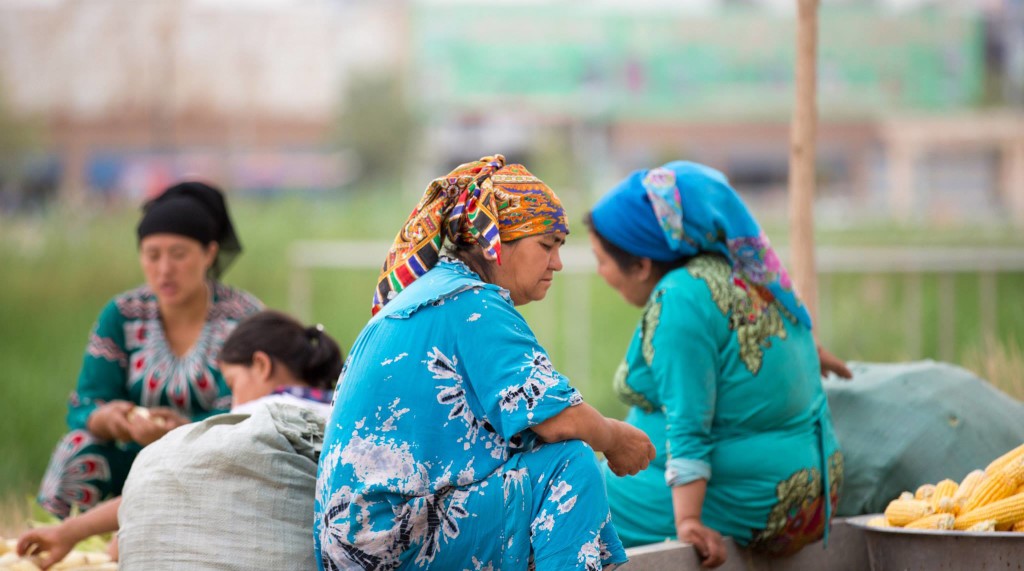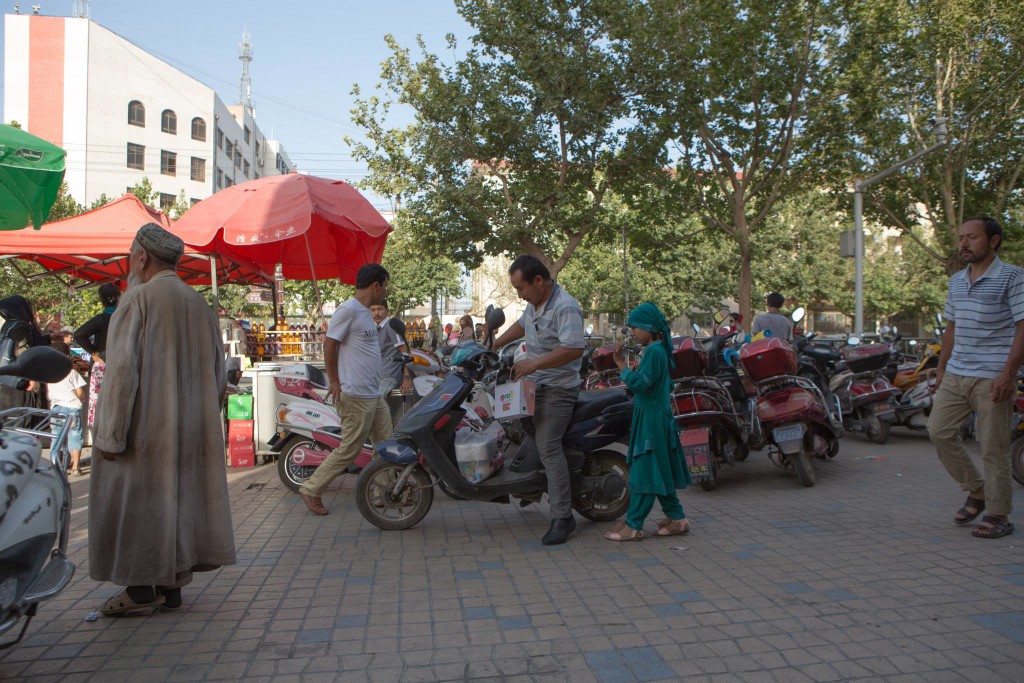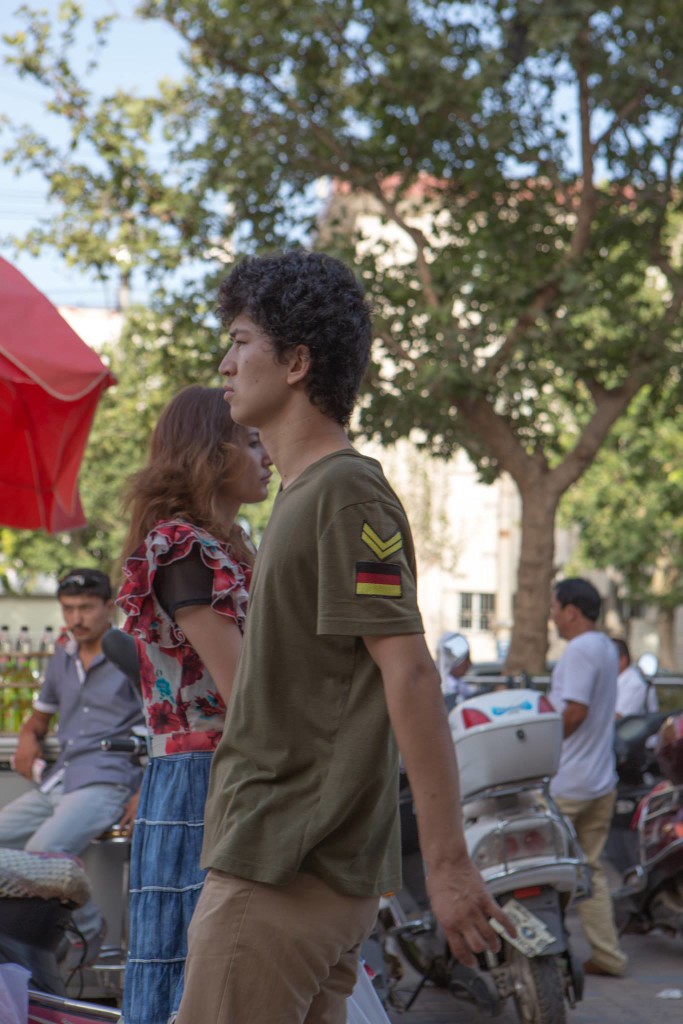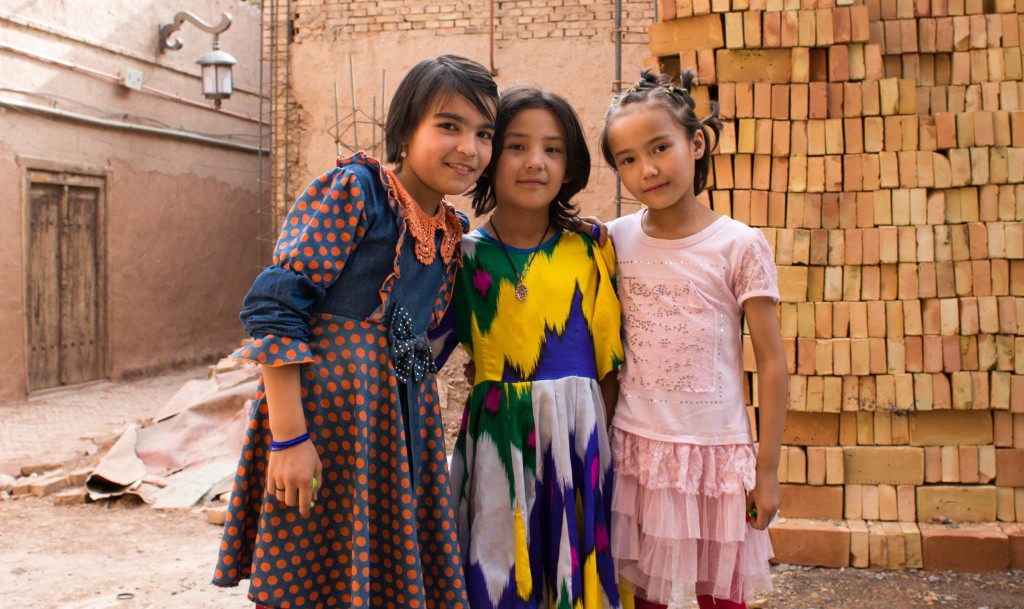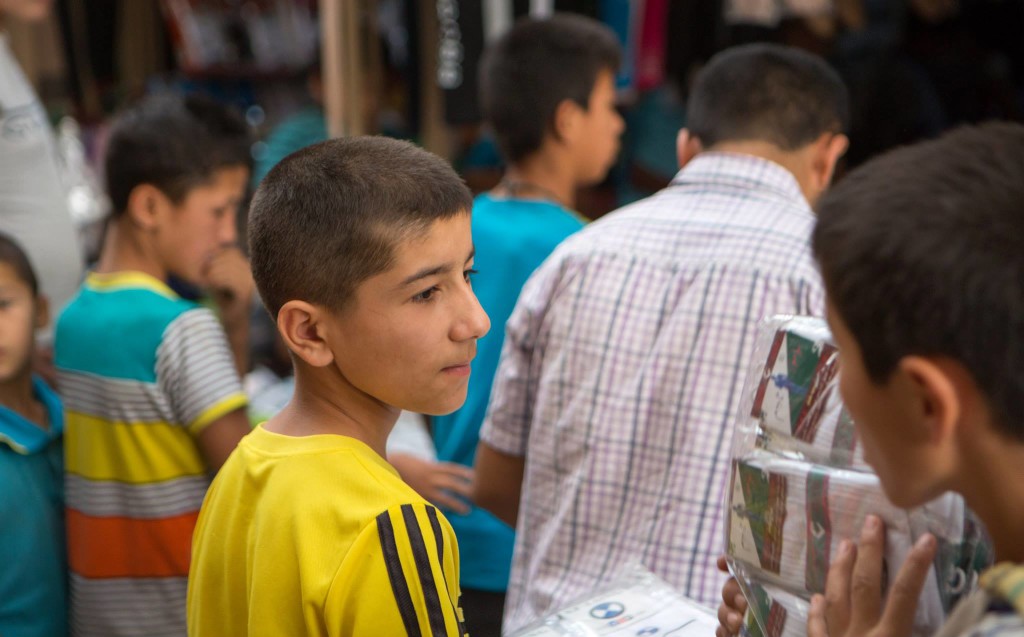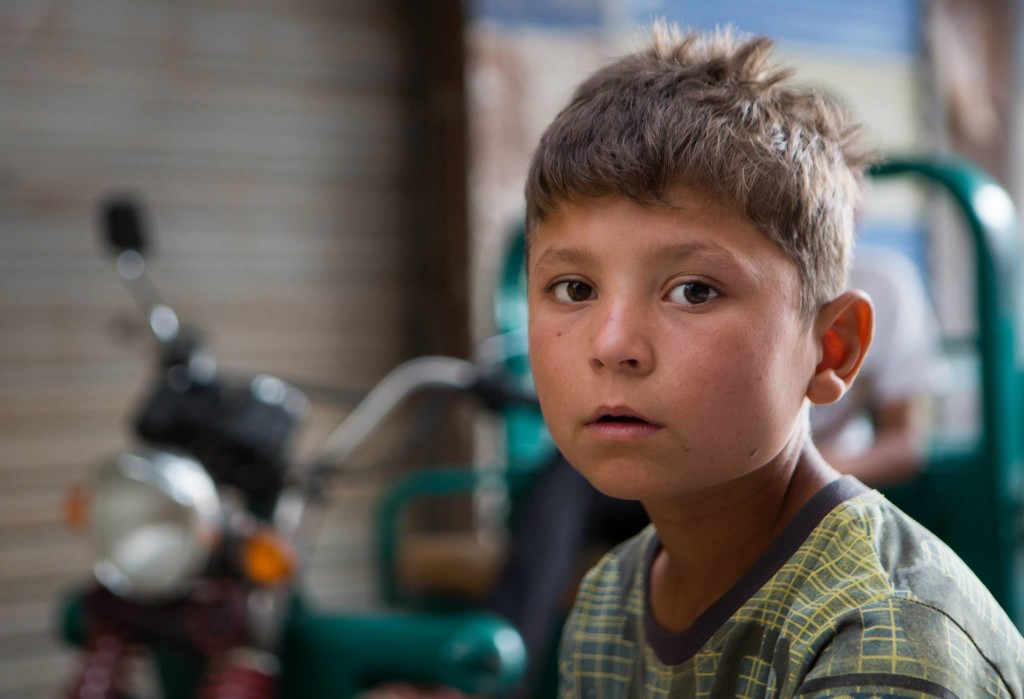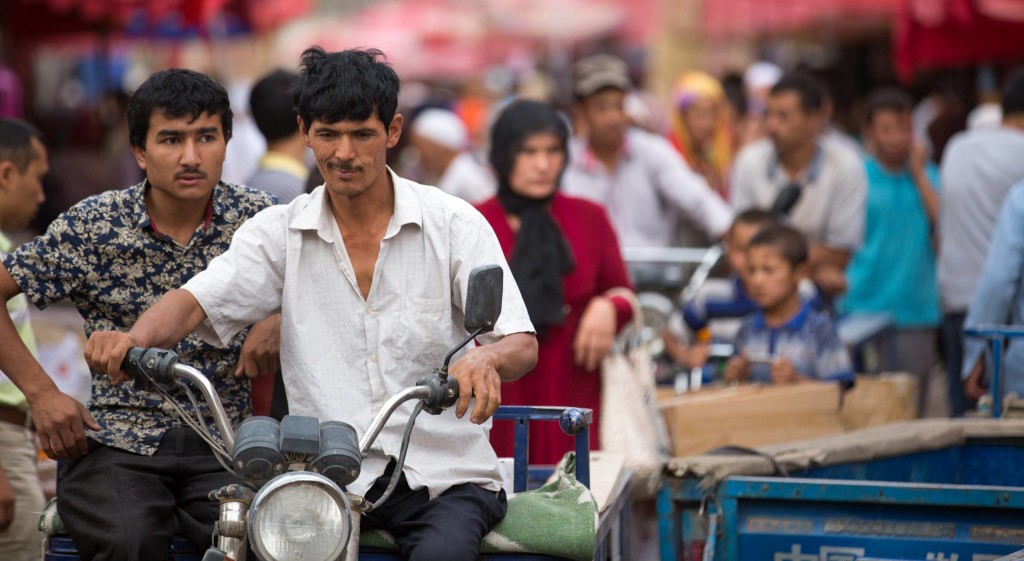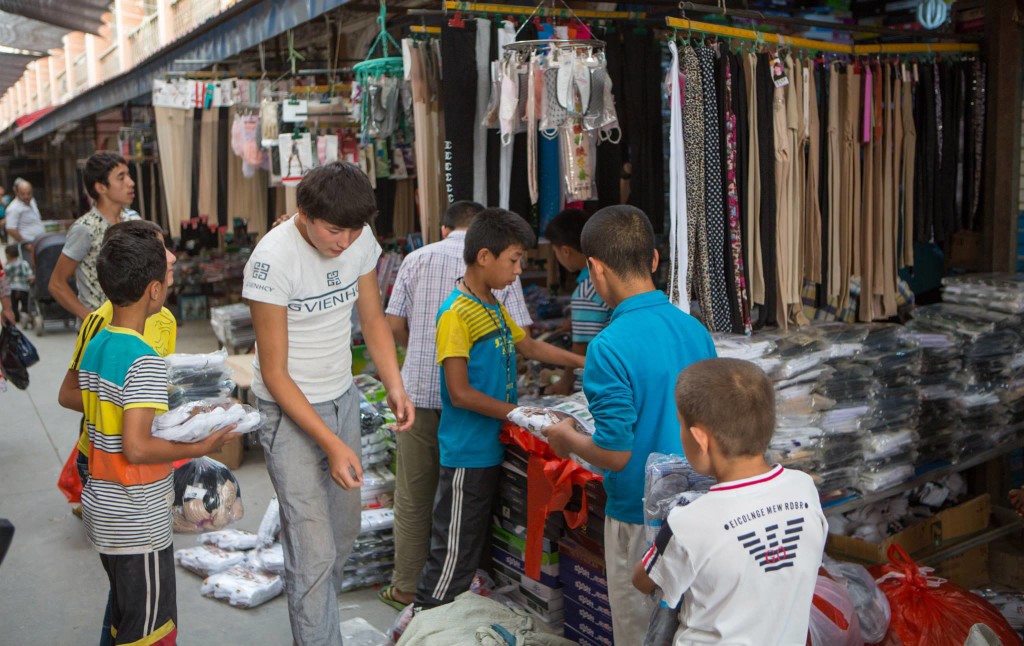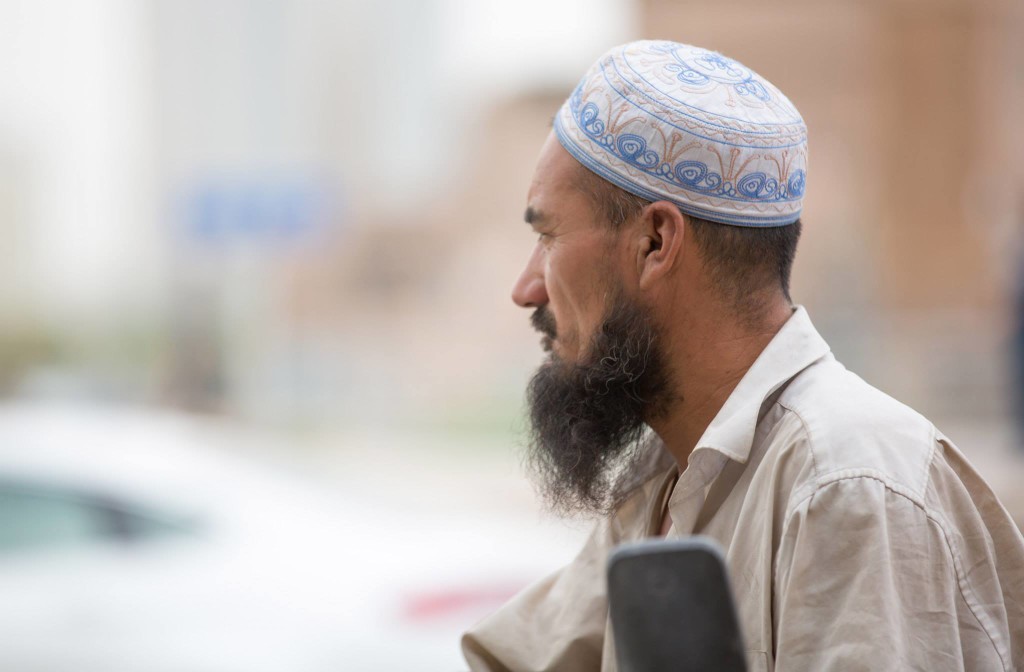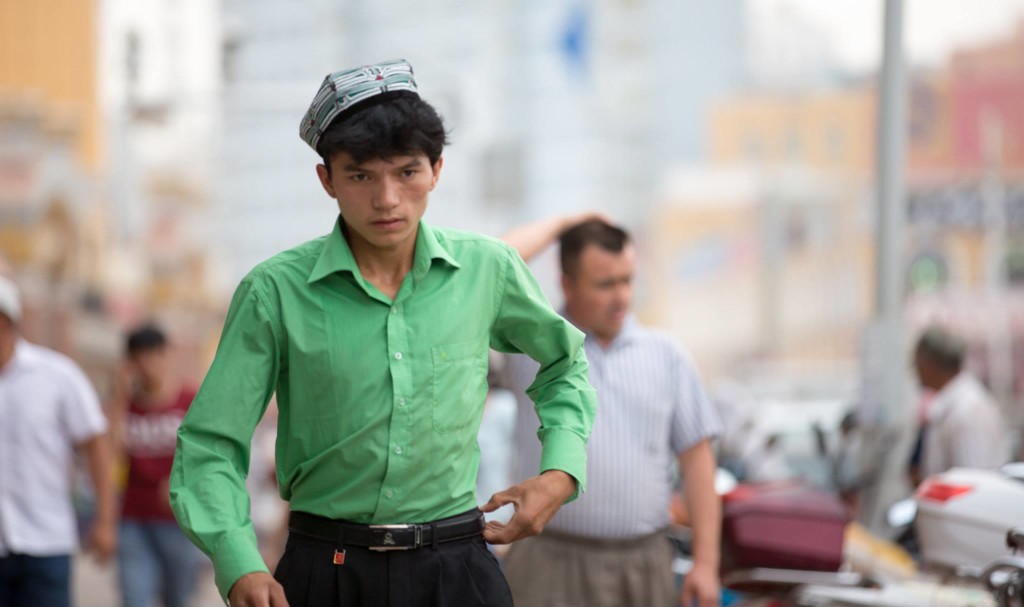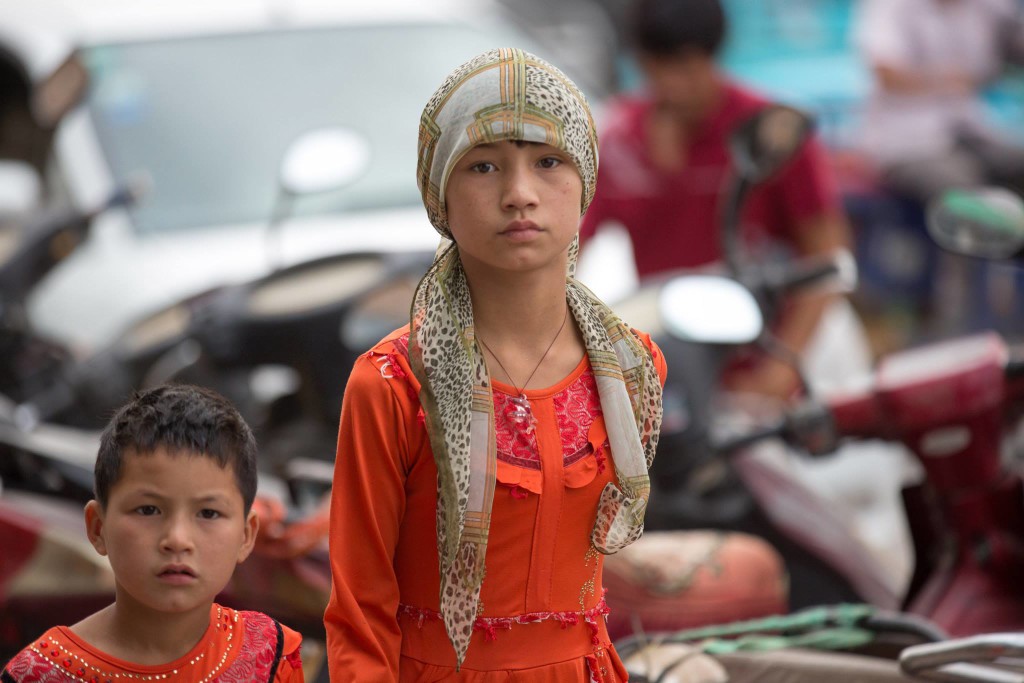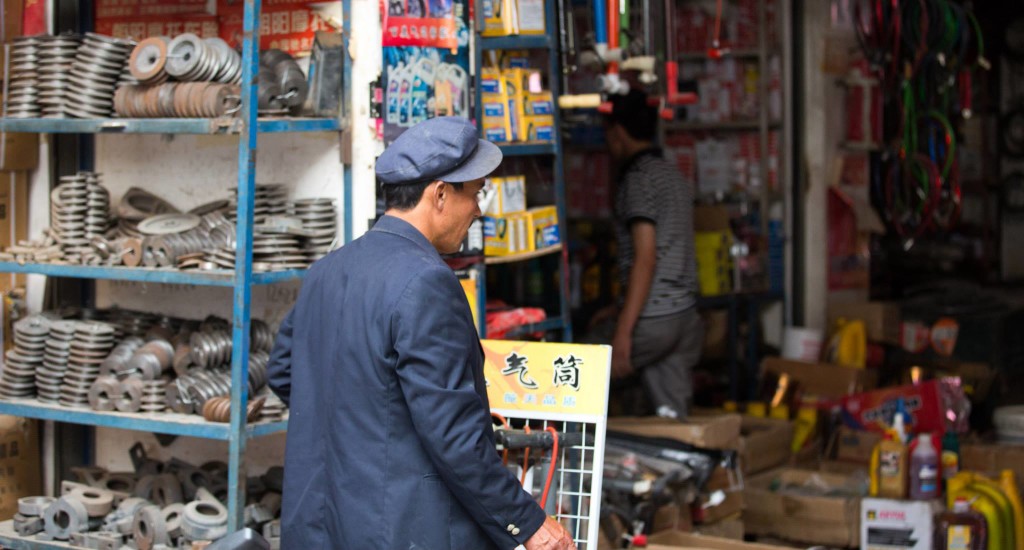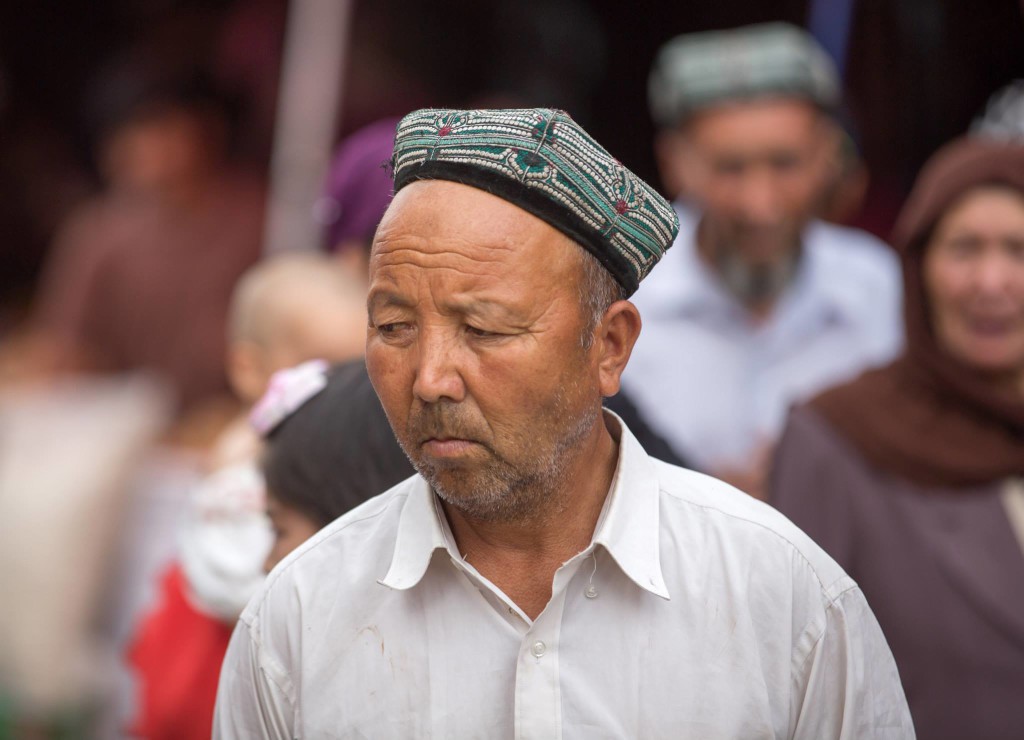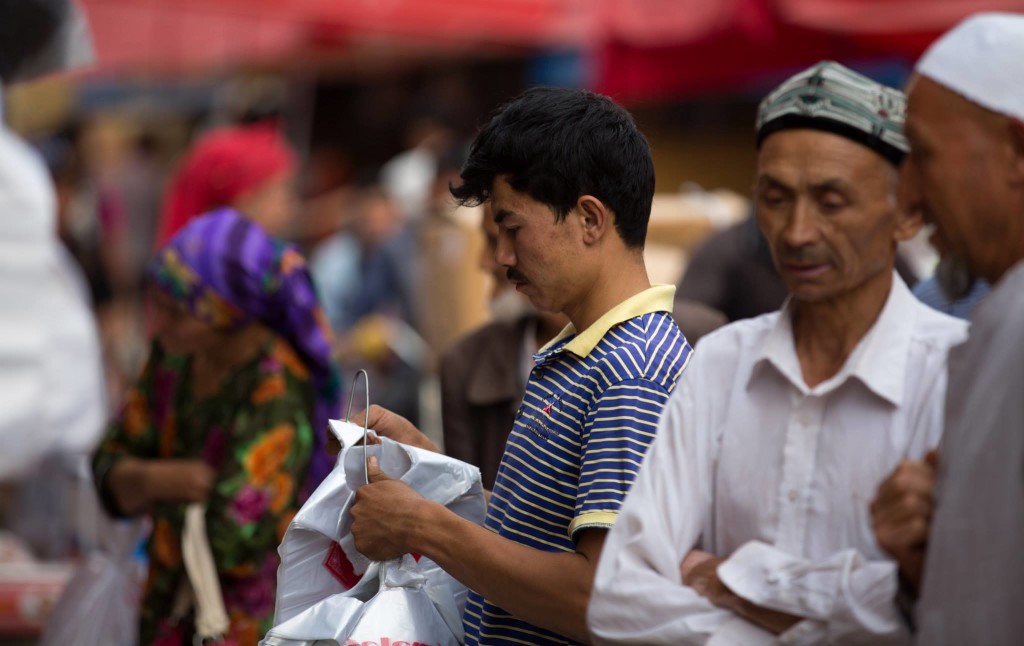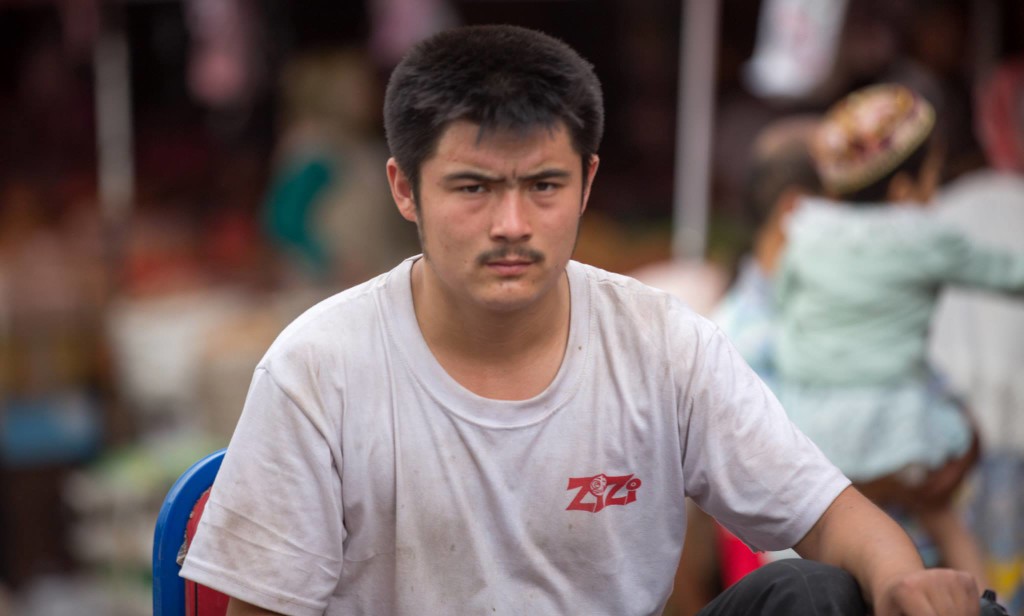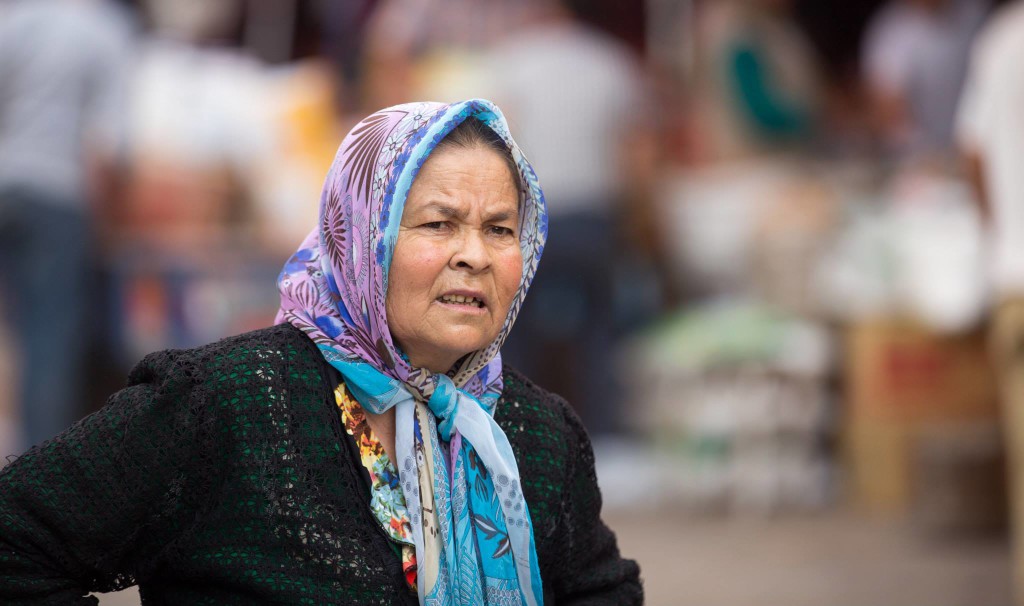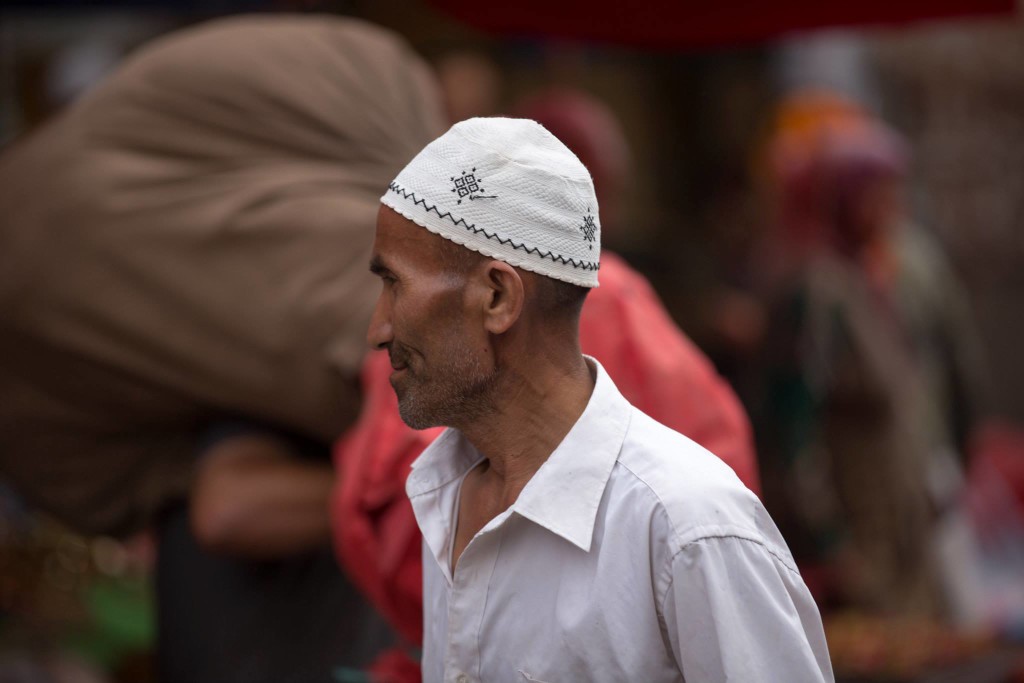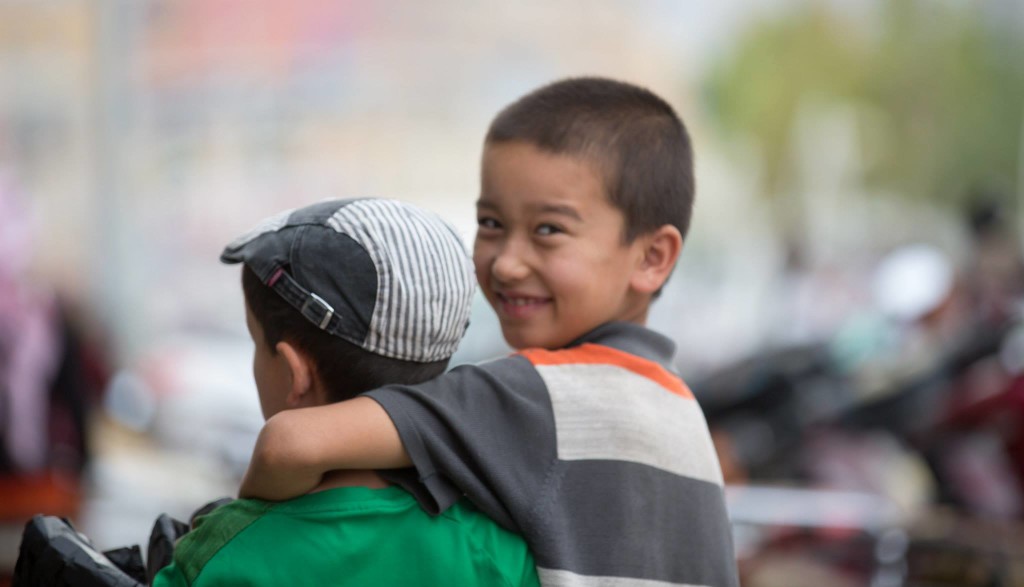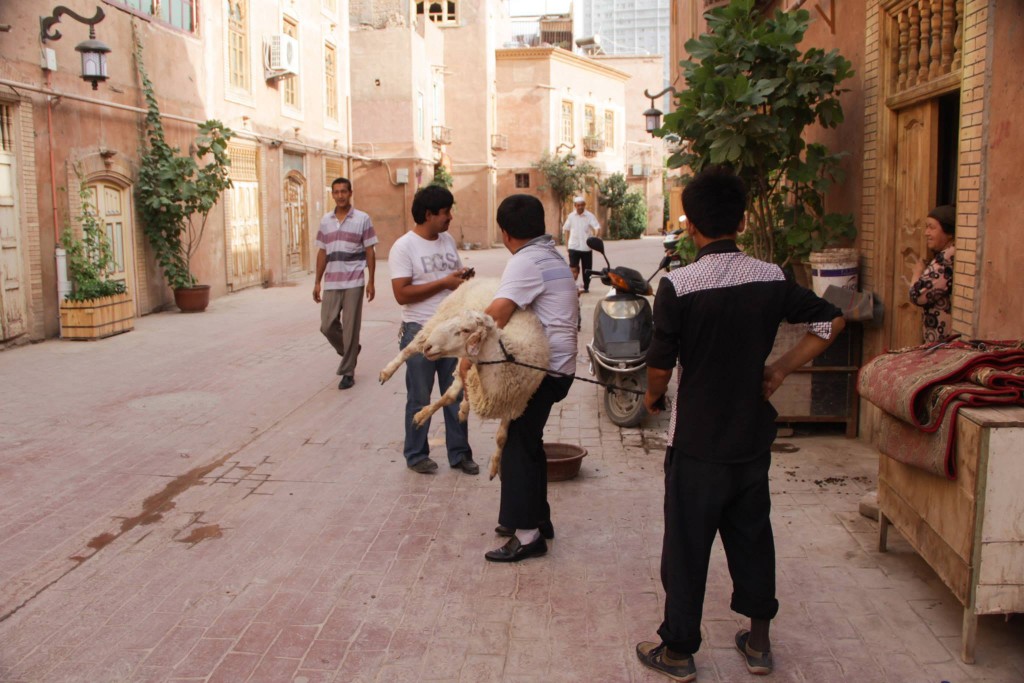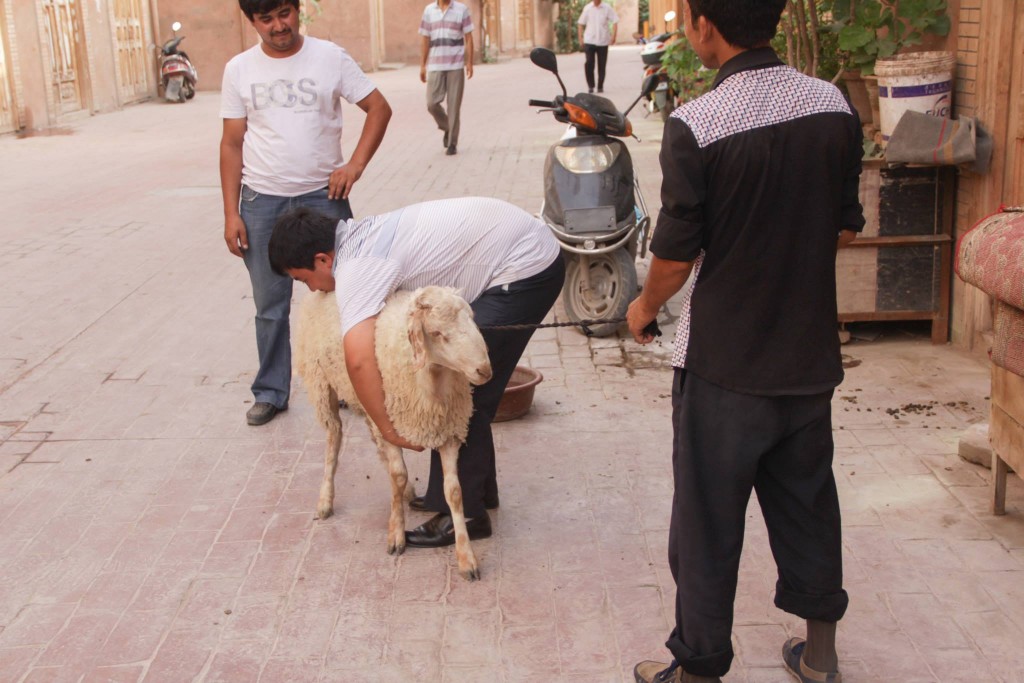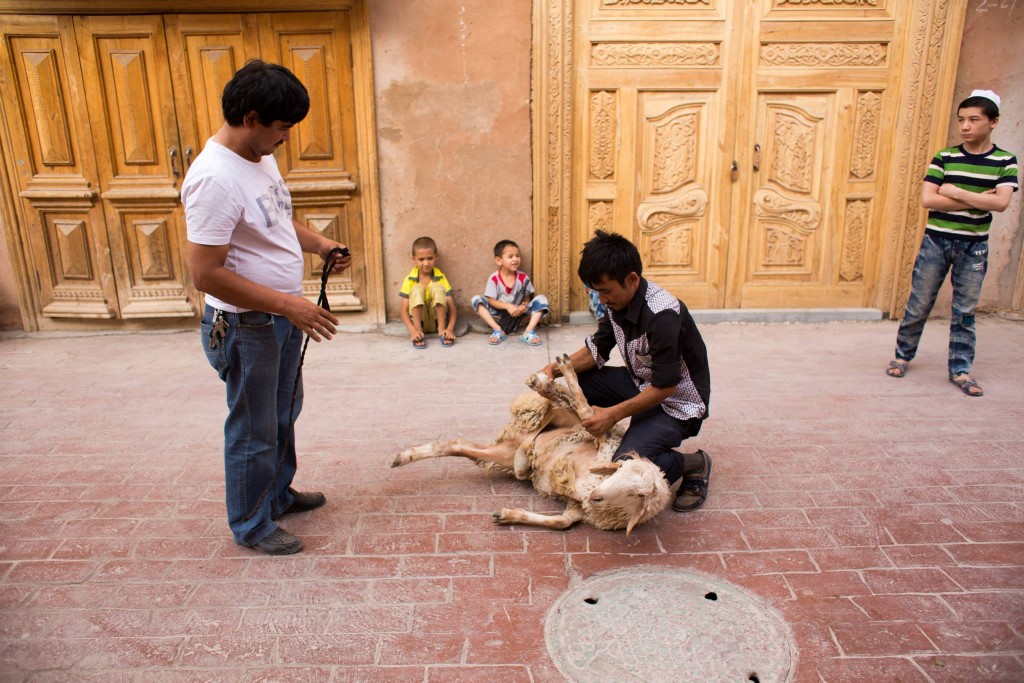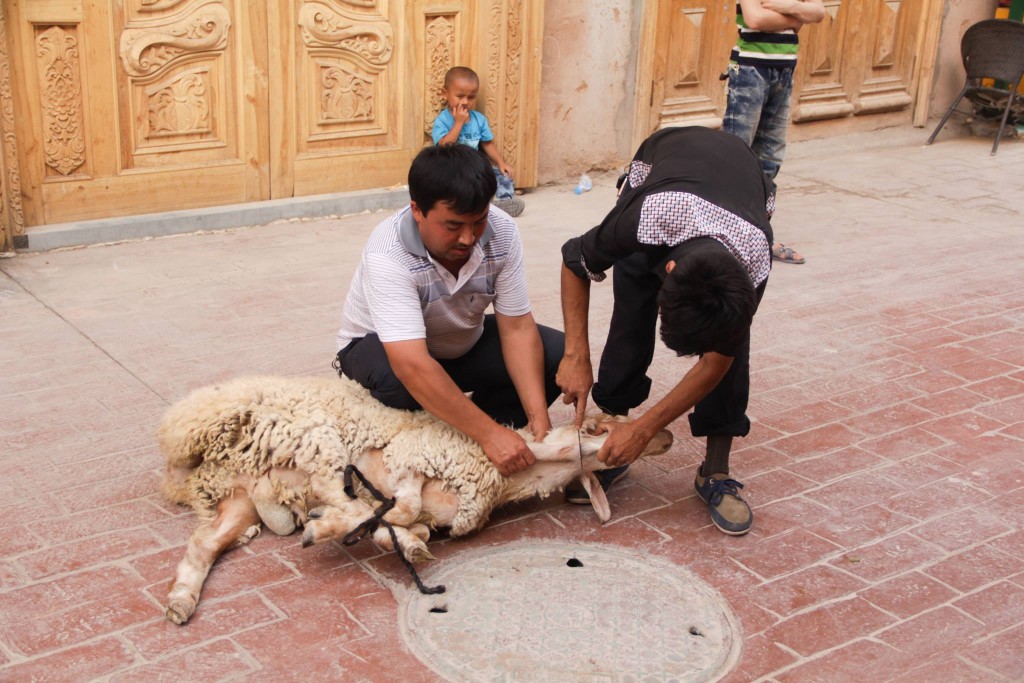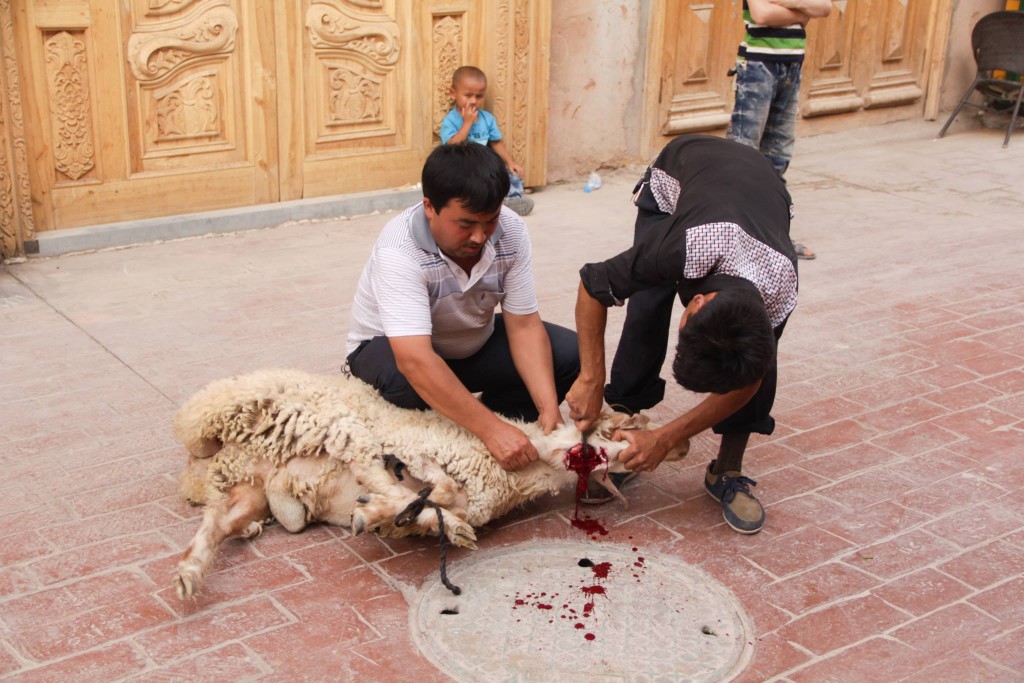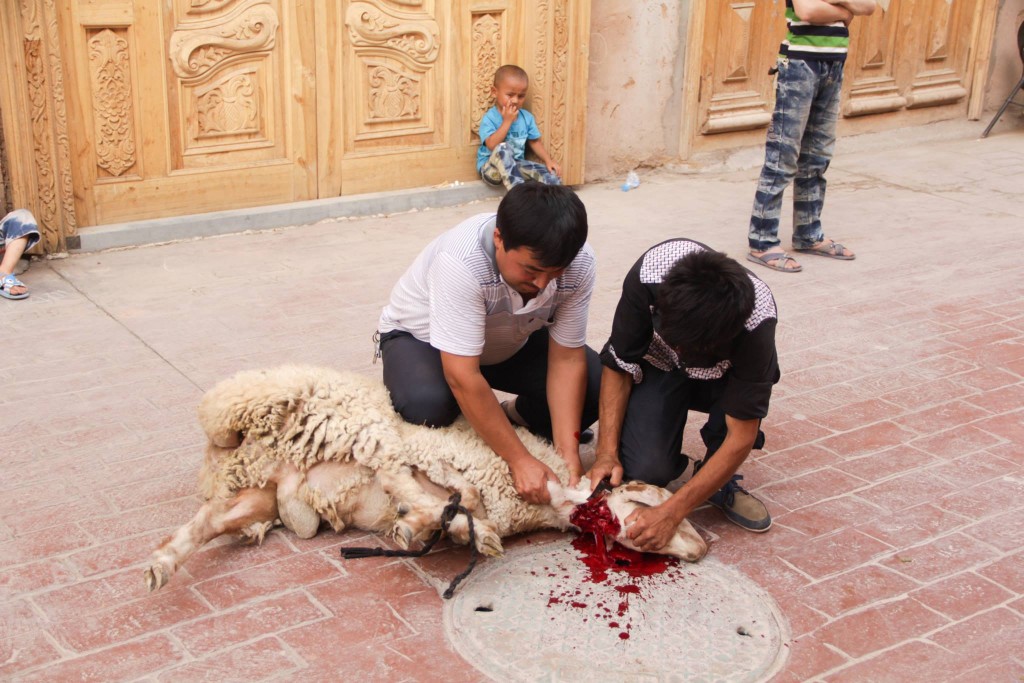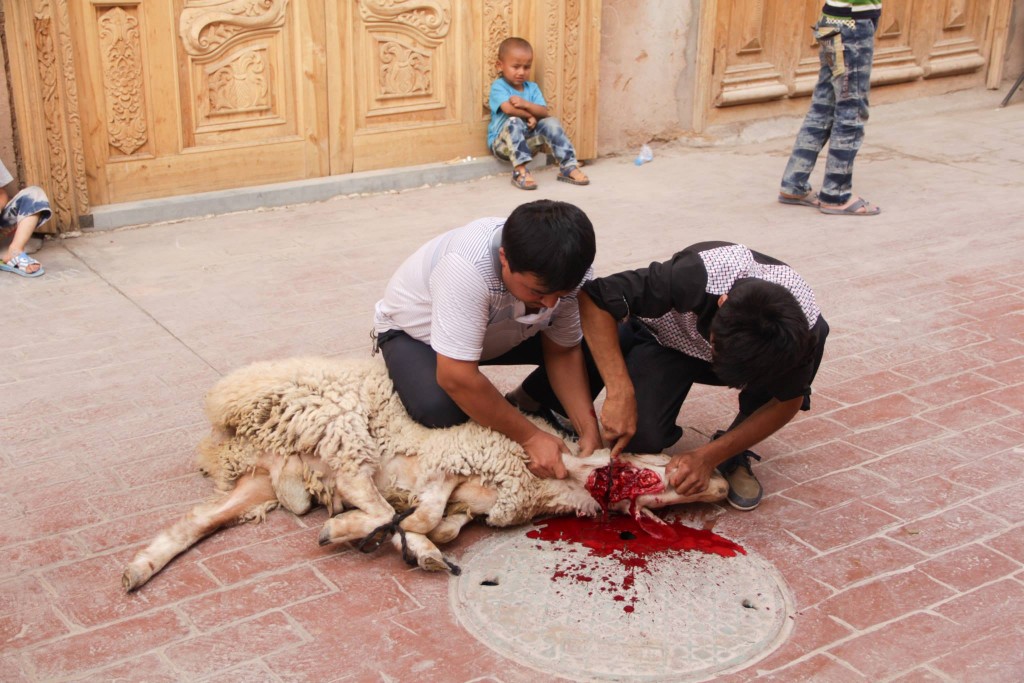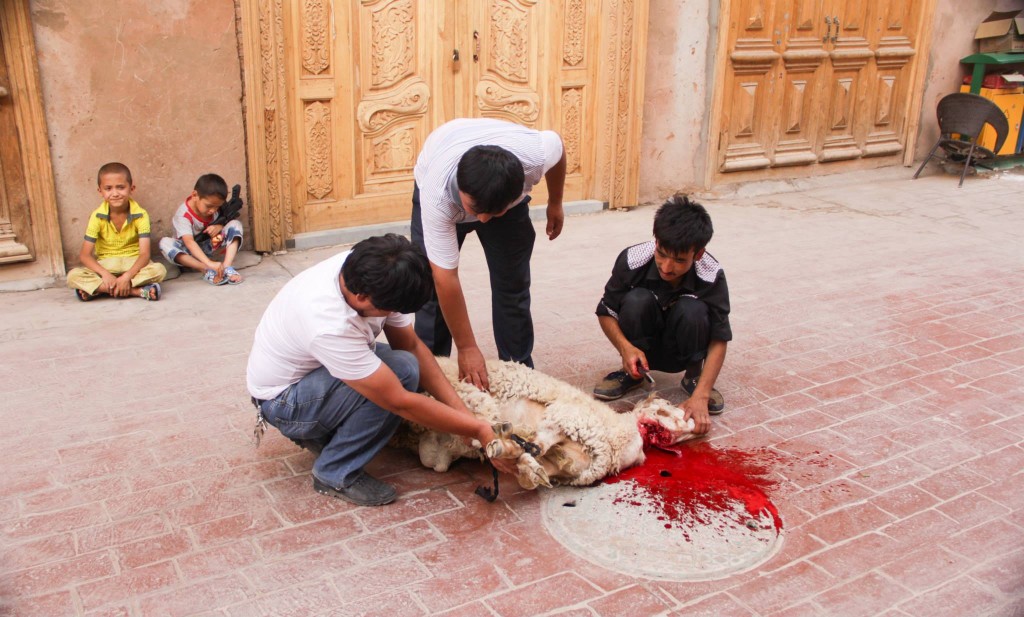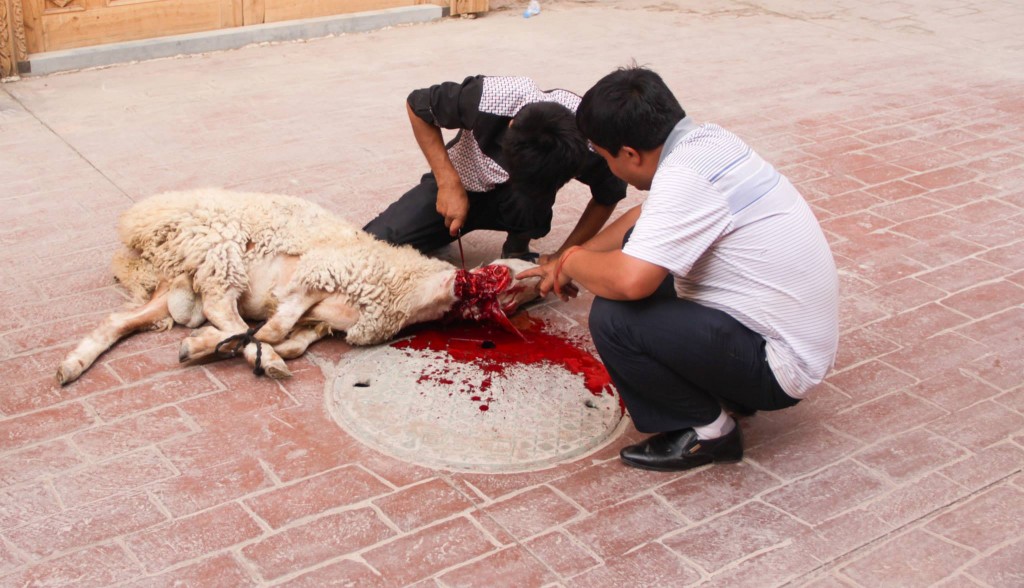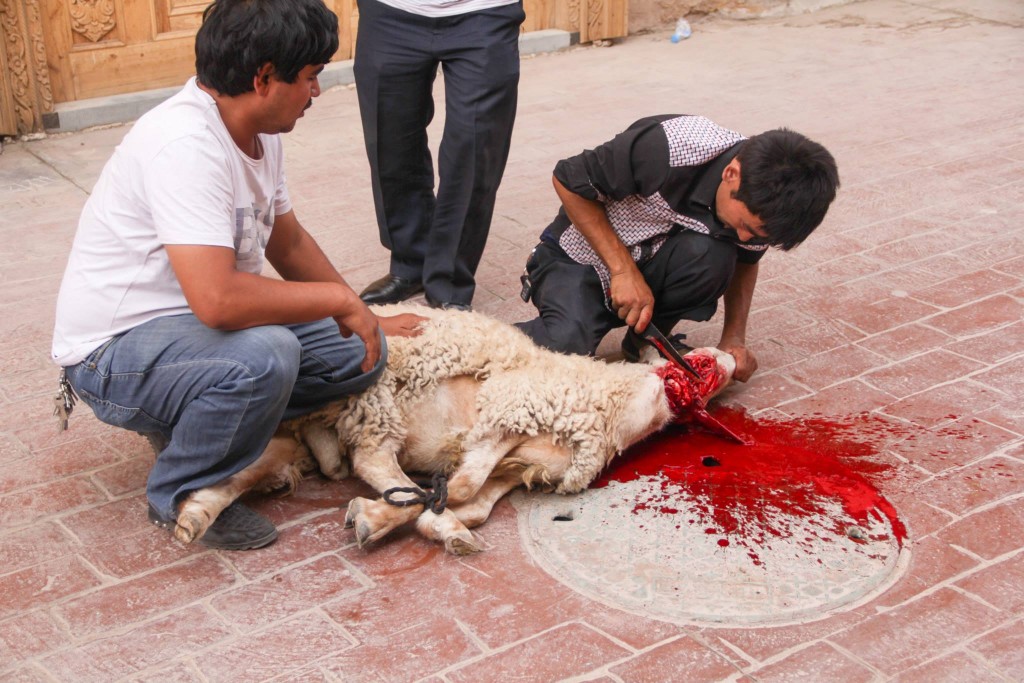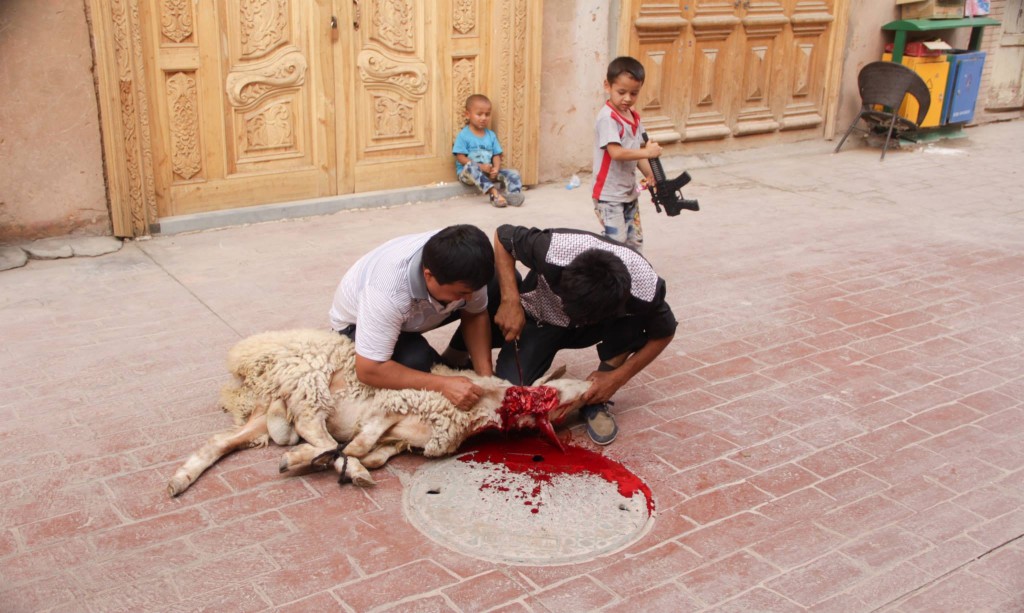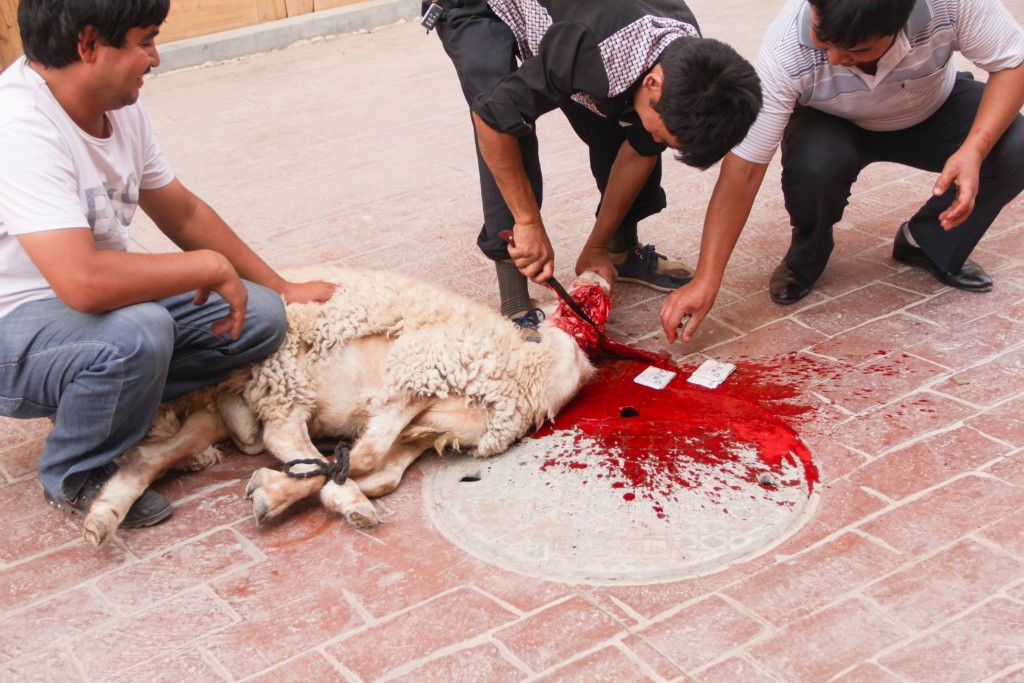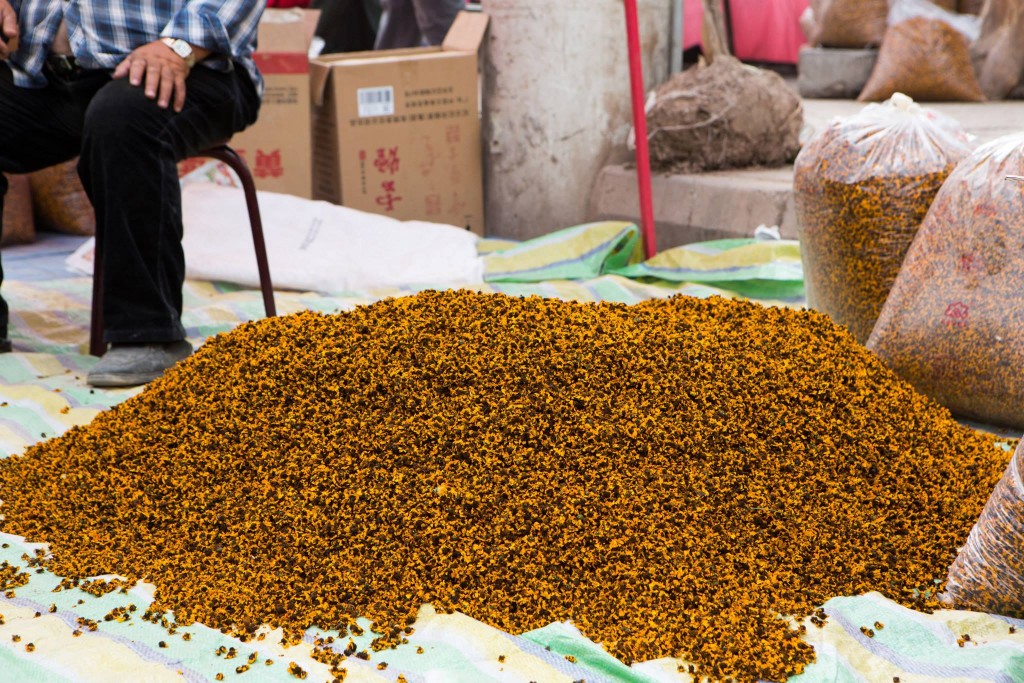
Chamomile Tea anyone?
When we first arrived, Kashgar’s famed Sunday Market seemed cavernous but dead. It was nine-thirty in the morning, Beijing time, which meant that it was seven-thirty, Xinjiang time. Markets are normally bustling by seven thirty. In fact, if you get to many markets any later than that, you have missed the best time.
But the Sunday Market was dead at that time. We walked the never-ending avenues in the center of one of the market’s buildings. The smaller lanes shooting off from the avenues were mostly lined with closed store fronts, the cold, metal shop doors and smooth, glistening concrete floors. An eerie quiet reigned with only a few shops, those selling small, everyday goods, soap and light bulbs, opened for business.
We wandered outside. This part of the market was beginning to bustle. About half the stores were open. Kashgar’s Sunday Market is only called the Sunday Market in English, because Sunday is its largest, though not its only, day.
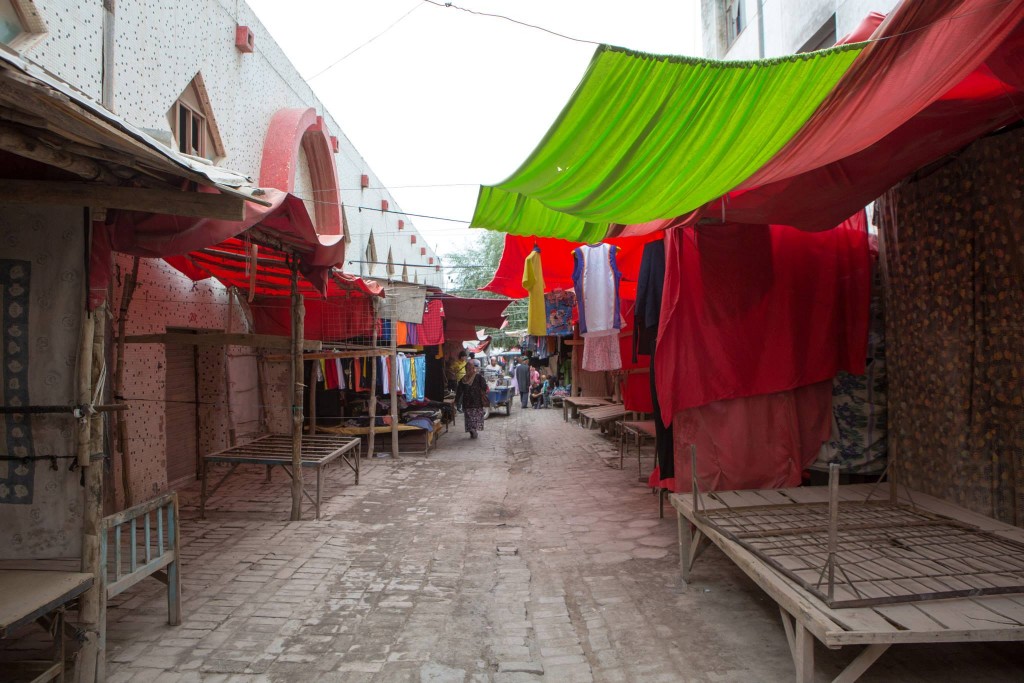
In Chinese, the market is just called the Big Bazaar. Outside, it was easier to see that this place really was a Central Asian bazaar that had somehow ended up in China. Here, the streets were dirt or broken asphalt and the shops were merely stalls covered by hung canvas.
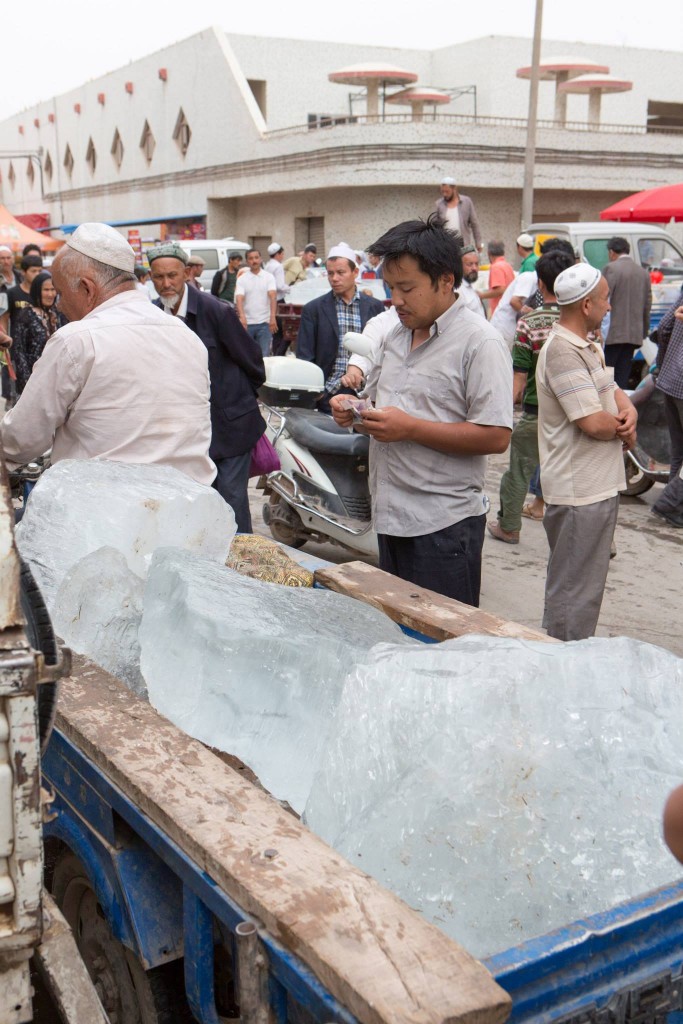
We walked farther up, hearing noise coming from the end of this stall-lined avenue. Here was the market we had been expecting. We were soon surrounded by sound: three-wheeled carts backing up, men yelling prices and ice being yanked off truck beds. We did not know why, but ice was the first thing that was sold in the morning.

“Bosh, bosh, bosh,” shouted a man driving his cart through the crowd towards me. “Bosh” means “out of the way” in Uighur and is an important word to know when visiting the market. The man drove past me, chilling the air for a few seconds with his cart full of ice.
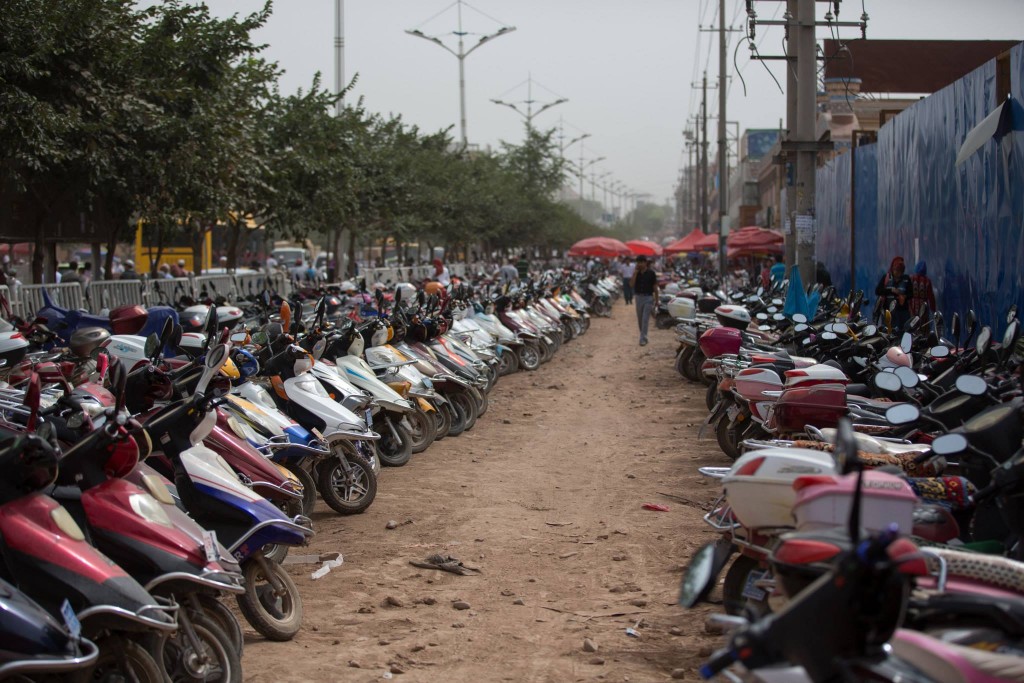
A few hours later, we returned when the market was in full swing. Now, the bazaar was packed. Motorbikes filled the dust-stained lots to the side of the entrance, hardly any room available to squeeze in a bike. Stalls opened wide, disgorging their wares, and voices filled the building, amplified by the concrete floors.
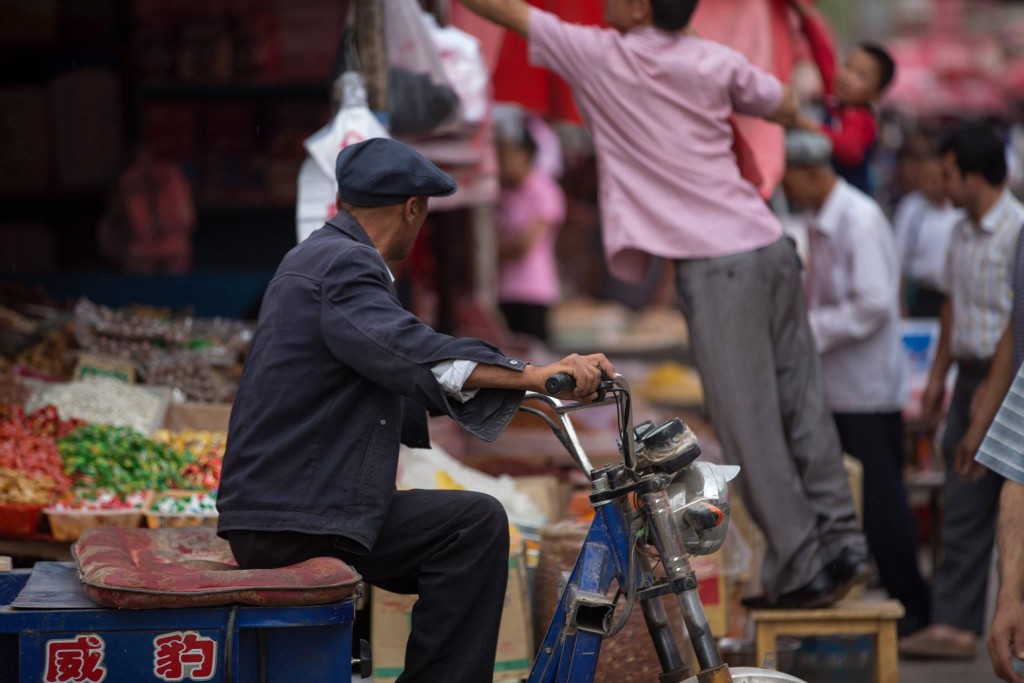
In the Sunday Market, it feels like you can buy anything. Nails, fans, ice, honey, rock candy, bugles, guitars, dutars, dates, hijabs, cloth, shirts, dresses, traditional Kyrgyz hats, Russian-style caps, fur caps, knives, tires, cabbage, brooms, bicycles, power tools, horse hair brushes. Anything.
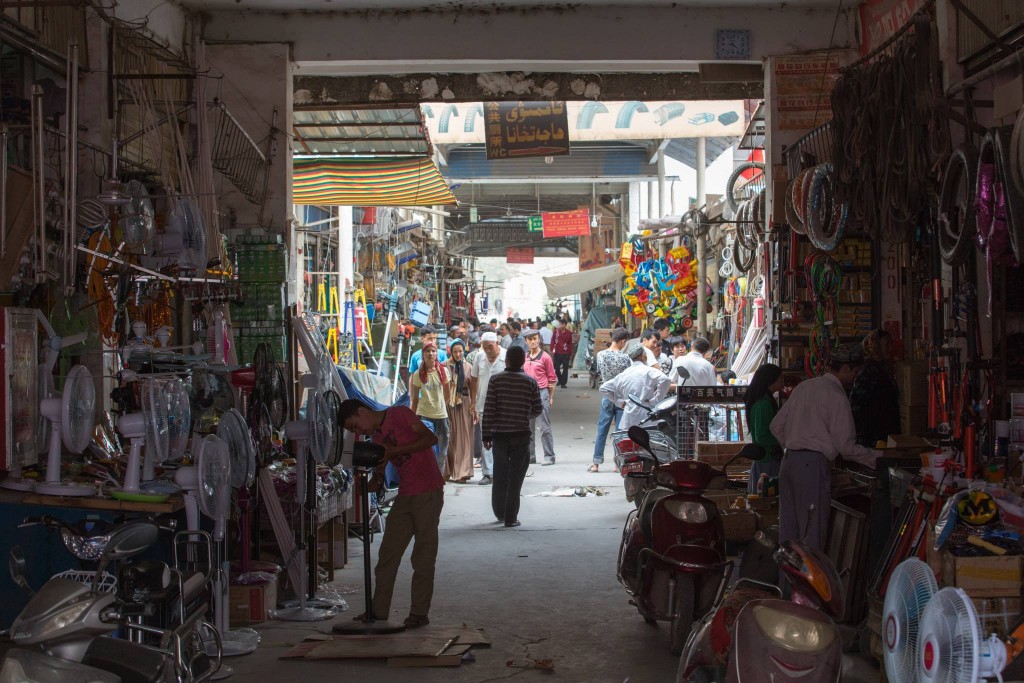
I mentioned this before, but Kashgar’s geography destined it as a market town, since it is surrounded on three sides by some of the world’s tallest mountain ranges and on the fourth side by one of the world’s largest deserts. For hundreds of miles in any direction, this is the only place where you could go to buy things. Thus, Kashgar became the Wal-Mart of the previous millennium.
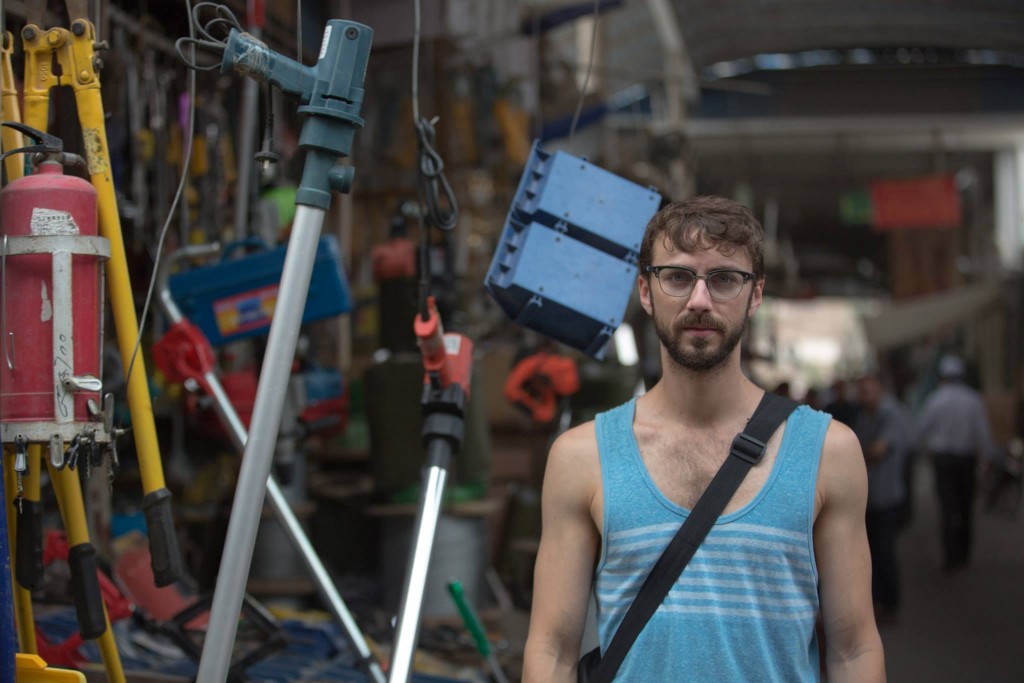
Power Tools
Amongst the hardware and fruits, our strangest find was small, children’s-sized vests made out of cat fur. We picked it up. It was trimmed with cotton lining around the arm holes and had a zipper in the front. I sent pictures to my wife, and she was horrified when I suggested buying a cat-skin vest for our cats.
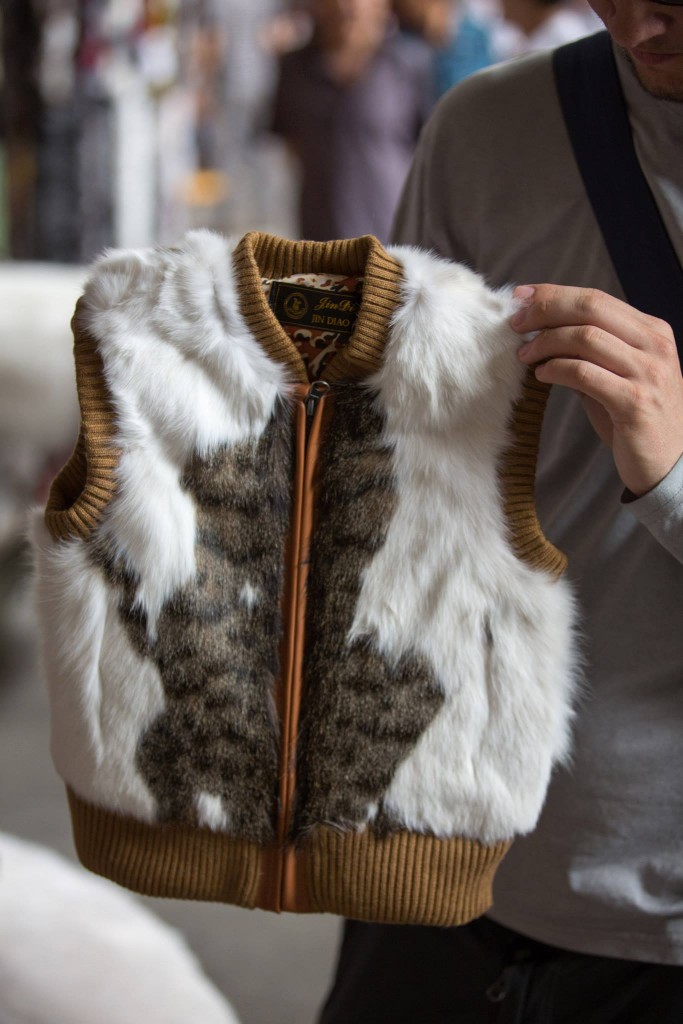
Cat fur vest
In the bazaar, we were able to wander for hours without feeling like we were in China. Nothing distinguishes Kashgar’s market from some of the one’s we went to later on, in Bishkek or Osh. The wares were the same, and the people manning the stalls looked similar. Chinese tourists milled about, but they looked as foreign as we did, touting large cameras and turning into each of the market’s lanes, surprised that this could still be a part of their country.
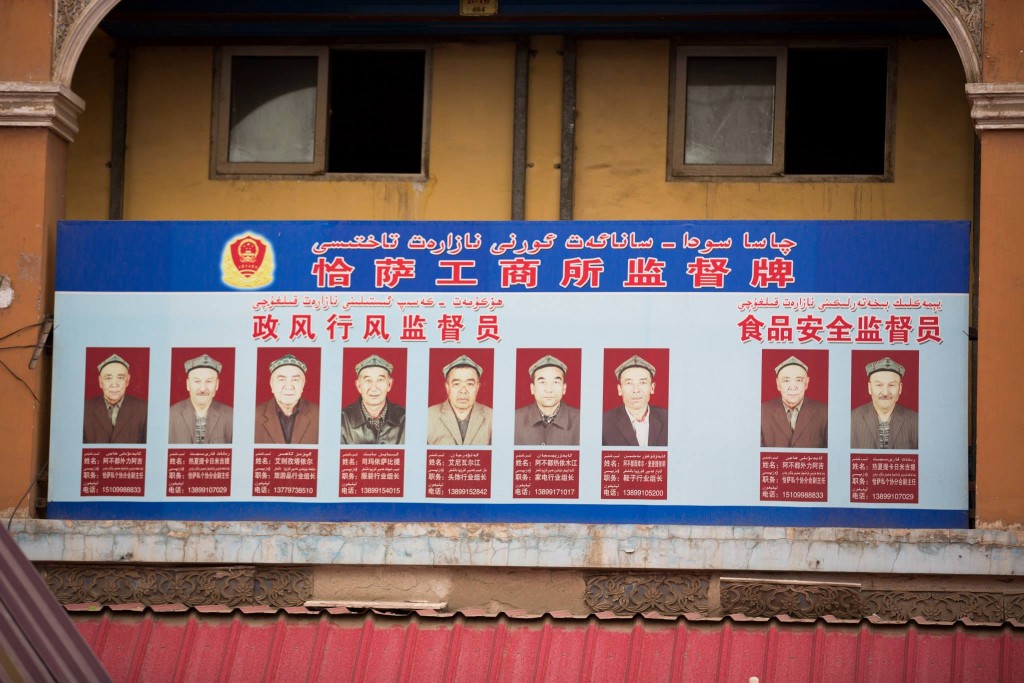
Chinese Sign
Once, however, I was reminded that, underneath the surface, even here, the Chinese state is never far away. Just above some of the shops, on an orange wall overlooking part of the outside Bazaar was a Communist style administrative board, with photos of officials. The men on the board were all Uighurs, all wearing doppa, the Uighur style hats. Seven men were Officers Controlling Governing and Administrative Style, two men were Officers Controlling Food Safety. Above the large, blockish Chinese words were smaller, Uighur words spelling out the same thing. The men looked out with the dull glazed stares that apparatchiks have in these sorts of photos throughout China.

Bugles
And then, we turned, and the sign disappeared. Immediately, we forgot that we were in China, surrounded by power tools and mustached men honking their three-wheeled carts.
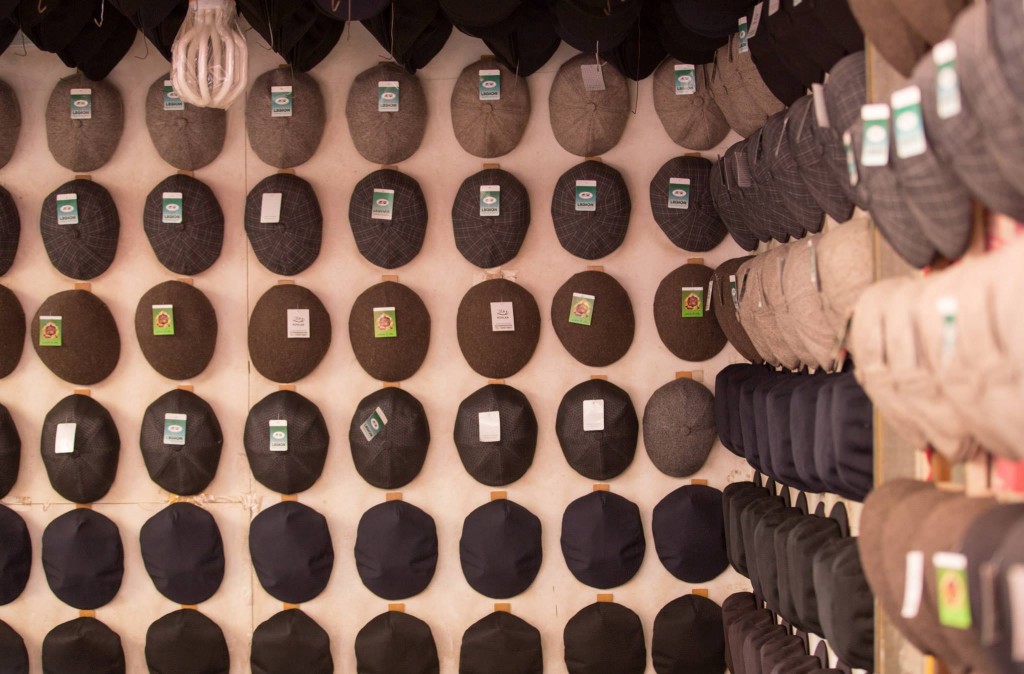
Hats
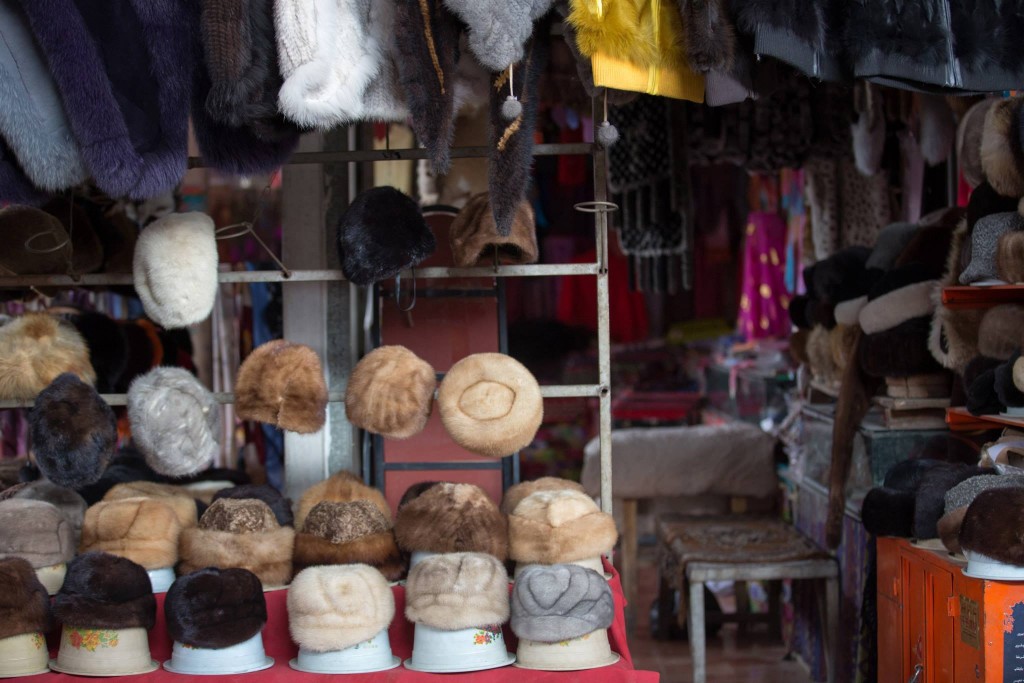
Fur Caps
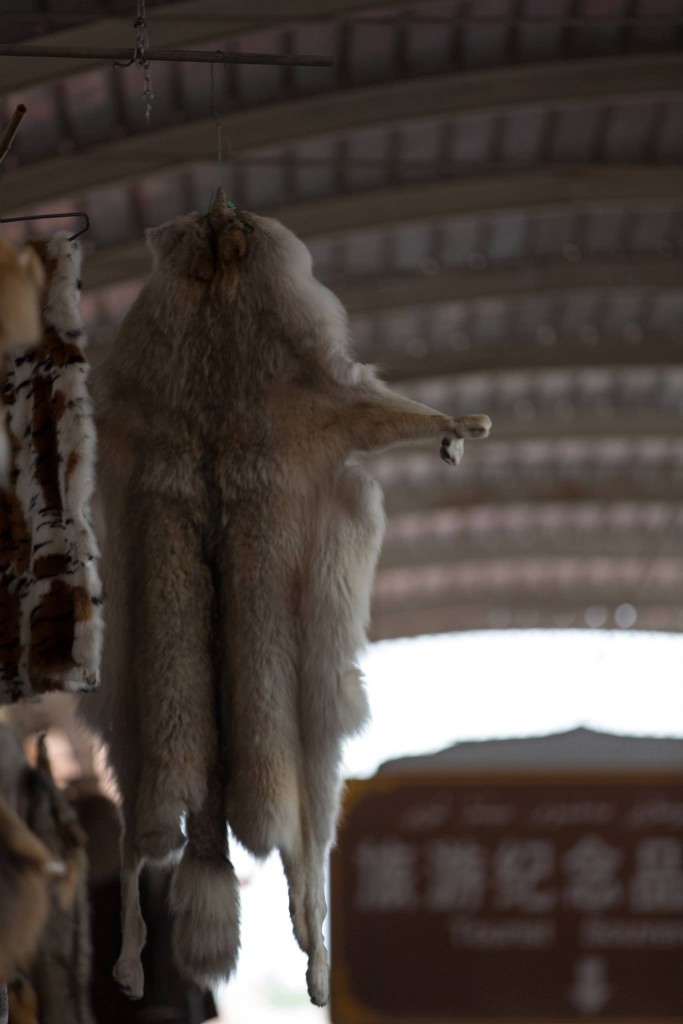
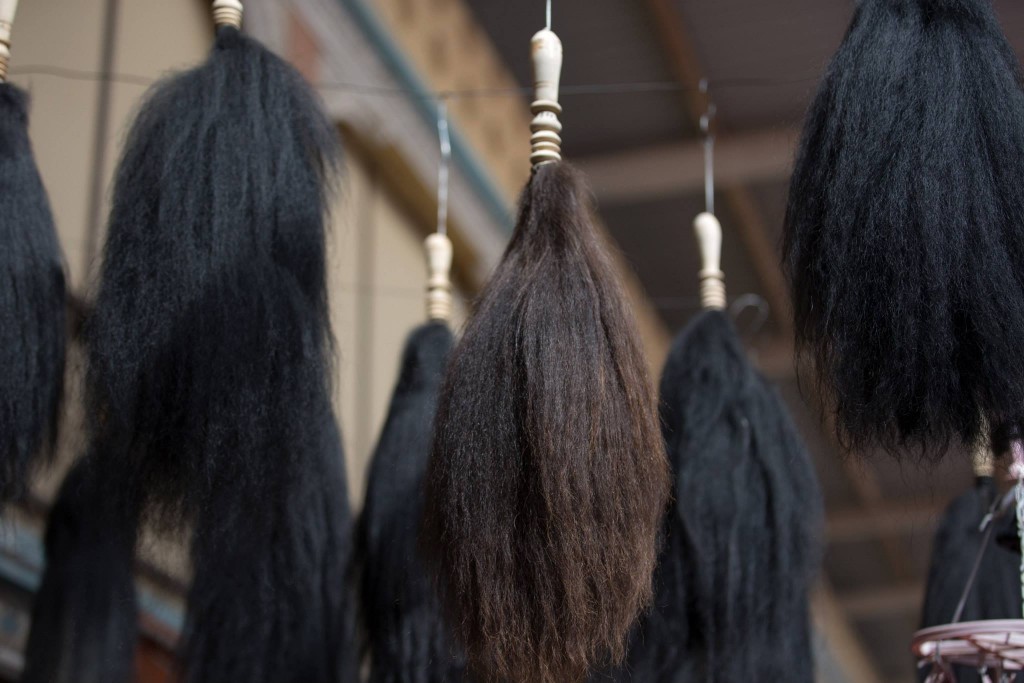
Horse hair dusters
